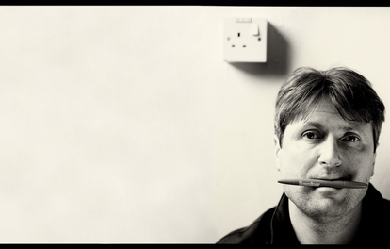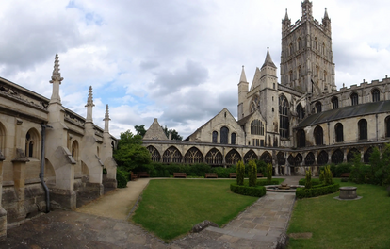
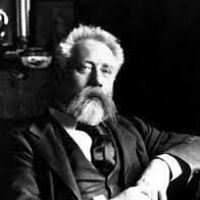
William Ernest Henley (23 August 1849 – 11 July 1903) was an English poet, critic and editor, best remembered for his 1875 poem “Invictus”. Henley was born in Gloucester and was the oldest of a family of six children, five sons and a daughter. His father, William, a bookseller and stationer, died in 1868 and was survived by young children and creditors. His mother, Mary Morgan, was descended from the poet and critic Joseph Wharton. Between 1861 and 1867, Henley was a pupil at the Crypt Grammar School (founded 1539).
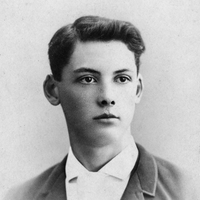
Edwin Arlington Robinson (December 22, 1869—April 6, 1935) was an American poet who won three Pulitzer Prizes for his work. He was born in Head Tide, Lincoln County, Maine but his family moved to Gardiner, Maine in 1871. He described his childhood in Maine as “stark and unhappy”: His parents (who had wanted a girl) did not name him until he was six months old, when they visited a holiday resort—whereupon, other vacationers decided that he should have a name and selected a man from Arlington, Massachusetts to draw a name out of a hat. Throughout his life, he not only hated his given name, but also his family’s habit of calling him “Win.” As an adult, he always used the signature “E. A.”
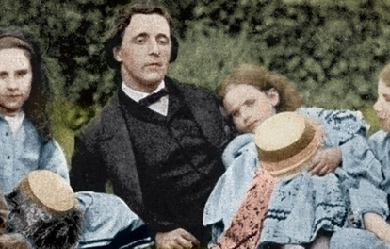
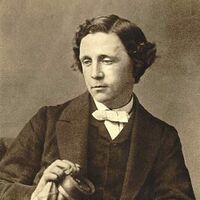
Charles Lutwidge Dodgson (27 January 1832 – 14 January 1898), better known by the pseudonym Lewis Carroll, was an English author, mathematician, logician, Anglican deacon and photographer. His most famous writings are Alice's Adventures in Wonderland and its sequel Through the Looking-Glass, as well as the poems "The Hunting of the Snark" and "Jabberwocky", all examples of the genre of literary nonsense. He is noted for his facility at word play, logic, and fantasy, and there are societies in many parts of the world (including the United Kingdom, Japan, the United States, and New Zealand) dedicated to the enjoyment and promotion of his works and the investigation of his life. Antecedents Dodgson's family was predominantly northern English, with Irish connections. Conservative and High Church Anglican, most of Dodgson's ancestors were army officers or Church of England clergy. His great-grandfather, also named Charles Dodgson, had risen through the ranks of the church to become the Bishop of Elphin. His grandfather, another Charles, had been an army captain, killed in action in Ireland in 1803 when his two sons were hardly more than babies. His mother's name was Frances Jane Lutwidge. The elder of these sons – yet another Charles Dodgson – was Carroll's father. He reverted to the other family tradition and took holy orders. He went to Westminster School, and then to Christ Church, Oxford. He was mathematically gifted and won a double first degree, which could have been the prelude to a brilliant academic career. Instead he married his first cousin in 1827 and became a country parson. Dodgson was born in the little parsonage of Daresbury in Cheshire near the towns of Warrington and Runcorn, the eldest boy but already the third child of the four-and-a-half-year-old marriage. Eight more children were to follow. When Charles was 11, his father was given the living of Croft-on-Tees in North Yorkshire, and the whole family moved to the spacious rectory. This remained their home for the next twenty-five years. Young Charles' father was an active and highly conservative cleric of the Church of England who later became the Archdeacon of Richmond and involved himself, sometimes influentially, in the intense religious disputes that were dividing the church. He was High Church, inclining to Anglo-Catholicism, an admirer of John Henry Newman and the Tractarian movement, and did his best to instill such views in his children. Young Charles was to develop an ambiguous relationship with his father's values and with the Church of England as a whole. Education Home life During his early youth, Dodgson was educated at home. His "reading lists" preserved in the family archives testify to a precocious intellect: at the age of seven the child was reading The Pilgrim's Progress. He also suffered from a stammer – a condition shared by most of his siblings – that often influenced his social life throughout his years. At age twelve he was sent to Richmond Grammar School (now part of Richmond School) at nearby Richmond. Rugby In 1846, young Dodgson moved on to Rugby School, where he was evidently less happy, for as he wrote some years after leaving the place: I cannot say ... that any earthly considerations would induce me to go through my three years again ... I can honestly say that if I could have been ... secure from annoyance at night, the hardships of the daily life would have been comparative trifles to bear. Scholastically, though, he excelled with apparent ease. "I have not had a more promising boy at his age since I came to Rugby", observed R.B. Mayor, then Mathematics master. Oxford He left Rugby at the end of 1849 and matriculated at Oxford in May 1850 as a member of his father's old college, Christ Church. After waiting for rooms in college to become available, he went into residence in January 1851. He had been at Oxford only two days when he received a summons home. His mother had died of "inflammation of the brain" – perhaps meningitis or a stroke – at the age of forty-seven. His early academic career veered between high promise and irresistible distraction. He did not always work hard, but was exceptionally gifted and achievement came easily to him. In 1852 he obtained first-class honours in Mathematics Moderations, and was shortly thereafter nominated to a Studentship by his father's old friend, Canon Edward Pusey. In 1854 he obtained first-class honours in the Final Honours School of Mathematics, graduating Bachelor of Arts. He remained at Christ Church studying and teaching, but the next year he failed an important scholarship through his self-confessed inability to apply himself to study. Even so, his talent as a mathematician won him the Christ Church Mathematical Lectureship in 1855, which he continued to hold for the next twenty-six years. Despite early unhappiness, Dodgson was to remain at Christ Church, in various capacities, until his death. Character and appearance Health challenges The young adult Charles Dodgson was about six feet tall, slender, and had curling brown hair and blue or grey eyes (depending on the account). He was described in later life as somewhat asymmetrical, and as carrying himself rather stiffly and awkwardly, though this may be on account of a knee injury sustained in middle age. As a very young child, he suffered a fever that left him deaf in one ear. At the age of seventeen, he suffered a severe attack of whooping cough, which was probably responsible for his chronically weak chest in later life. Another defect he carried into adulthood was what he referred to as his "hesitation", a stammer he acquired in early childhood and which plagued him throughout his life. The stammer has always been a potent part of the conceptions of Dodgson; it is part of the belief that he stammered only in adult company and was free and fluent with children, but there is no evidence to support this idea. Many children of his acquaintance remembered the stammer while many adults failed to notice it. Dodgson himself seems to have been far more acutely aware of it than most people he met; it is said he caricatured himself as the Dodo in Alice's Adventures in Wonderland, referring to his difficulty in pronouncing his last name, but this is one of the many "facts" often-repeated, for which no firsthand evidence remains. He did indeed refer to himself as the dodo, but that this was a reference to his stammer is simply speculation. Although Dodgson's stammer troubled him, it was never so debilitating that it prevented him from applying his other personal qualities to do well in society. At a time when people commonly devised their own amusements and when singing and recitation were required social skills, the young Dodgson was well-equipped to be an engaging entertainer. He reportedly could sing tolerably well and was not afraid to do so before an audience. He was adept at mimicry and storytelling, and was reputedly quite good at charades. Social connections In the interim between his early published writing and the success of the Alice books, Dodgson began to move in the Pre-Raphaelite social circle. He first met John Ruskin in 1857 and became friendly with him. He developed a close relationship with Dante Gabriel Rossetti and his family, and also knew William Holman Hunt, John Everett Millais, and Arthur Hughes, among other artists. He also knew the fairy-tale author George MacDonald well – it was the enthusiastic reception of Alice by the young MacDonald children that convinced him to submit the work for publication. Politics, religion and philosophy In broad terms, Dodgson has traditionally been regarded as politically, religiously, and personally conservative. Martin Gardner labels Dodgson as a Tory who was "awed by lords and inclined to be snobbish towards inferiors." The Revd W. Tuckwell, in his Reminiscences of Oxford (1900), regarded him as "austere, shy, precise, absorbed in mathematical reverie, watchfully tenacious of his dignity, stiffly conservative in political, theological, social theory, his life mapped out in squares like Alice's landscape." However, Dodgson also expressed interest in philosophies and religions that seem at odds with this assessment. For example, he was a founding member of the Society for Psychical Research. It has been argued by the proponents of the 'Carroll Myth' that these factors require a reconsideration of Gardner's diagnosis, and that perhaps, Dodgson's true outlook was more complex than previously believed (see 'the Carroll Myth' below). Dodgson wrote some studies of various philosophical arguments. In 1895, he developed a philosophical regressus-argument on deductive reasoning in his article "What the Tortoise Said to Achilles", which appeared in one of the early volumes of the philosophical journal Mind. The article was reprinted in the same journal a hundred years later, in 1995, with a subsequent article by Simon Blackburn titled Practical Tortoise Raising. Artistic activities Literature From a young age, Dodgson wrote poetry and short stories, both contributing heavily to the family magazine Mischmasch and later sending them to various magazines, enjoying moderate success. Between 1854 and 1856, his work appeared in the national publications, The Comic Times and The Train, as well as smaller magazines like the Whitby Gazette and the Oxford Critic. Most of this output was humorous, sometimes satirical, but his standards and ambitions were exacting. "I do not think I have yet written anything worthy of real publication (in which I do not include the Whitby Gazette or the Oxonian Advertiser), but I do not despair of doing so some day," he wrote in July 1855. Sometime after 1850, he did write puppet plays for his siblings' entertainment, of which one has survived, La Guida di Bragia. In 1856 he published his first piece of work under the name that would make him famous. A romantic poem called "Solitude" appeared in The Train under the authorship of "Lewis Carroll." This pseudonym was a play on his real name; Lewis was the anglicised form of Ludovicus, which was the Latin for Lutwidge, and Carroll an Irish surname similar to the Latin name Carolus, from which the name Charles comes. Alice In the same year, 1856, a new Dean, Henry Liddell, arrived at Christ Church, bringing with him his young family, all of whom would figure largely in Dodgson's life and, over the following years, greatly influence his writing career. Dodgson became close friends with Liddell's wife, Lorina, and their children, particularly the three sisters: Lorina, Edith and Alice Liddell. He was for many years widely assumed to have derived his own "Alice" from Alice Liddell. This was given some apparent substance by the fact the acrostic poem at the end of Through the Looking Glass spells out her name, and that there are many superficial references to her hidden in the text of both books. It has been pointed out that Dodgson himself repeatedly denied in later life that his "little heroine" was based on any real child, and frequently dedicated his works to girls of his acquaintance, adding their names in acrostic poems at the beginning of the text. Gertrude Chataway's name appears in this form at the beginning of The Hunting of the Snark, and no one has ever suggested this means any of the characters in the narrative are based on her. Though information is scarce (Dodgson's diaries for the years 1858–1862 are missing), it does seem clear that his friendship with the Liddell family was an important part of his life in the late 1850s, and he grew into the habit of taking the children (first the boy, Harry, and later the three girls) on rowing trips accompanied by an adult friend to nearby Nuneham Courtenay or Godstow. It was on one such expedition, on 4 July 1862, that Dodgson invented the outline of the story that eventually became his first and largest commercial success. Having told the story and been begged by Alice Liddell to write it down, Dodgson eventually (after much delay) presented her with a handwritten, illustrated manuscript entitled Alice's Adventures Under Ground in November 1864. Before this, the family of friend and mentor George MacDonald read Dodgson's incomplete manuscript, and the enthusiasm of the MacDonald children encouraged Dodgson to seek publication. In 1863, he had taken the unfinished manuscript to Macmillan the publisher, who liked it immediately. After the possible alternative titles Alice Among the Fairies and Alice's Golden Hour were rejected, the work was finally published as Alice's Adventures in Wonderland in 1865 under the Lewis Carroll pen-name, which Dodgson had first used some nine years earlier. The illustrations this time were by Sir John Tenniel; Dodgson evidently thought that a published book would need the skills of a professional artist. The overwhelming commercial success of the first Alice book changed Dodgson's life in many ways. The fame of his alter ego "Lewis Carroll" soon spread around the world. He was inundated with fan mail and with sometimes unwanted attention. Indeed, according to one popular story, Queen Victoria herself enjoyed Alice In Wonderland so much that she suggested he dedicate his next book to her, and was accordingly presented with his next work, a scholarly mathematical volume entitled An Elementary Treatise on Determinants. Dodgson himself vehemently denied this story, commenting "...It is utterly false in every particular: nothing even resembling it has occurred"; and it is unlikely for other reasons: as T.B. Strong comments in a Times article, "It would have been clean contrary to all his practice to identify [the] author of Alice with the author of his mathematical works". He also began earning quite substantial sums of money but continued with his seemingly disliked post at Christ Church. Late in 1871, a sequel – Through the Looking-Glass and What Alice Found There – was published. (The title page of the first edition erroneously gives "1872" as the date of publication.) Its somewhat darker mood possibly reflects the changes in Dodgson's life. His father had recently died (1868), plunging him into a depression that lasted some years. The Hunting of the Snark In 1876, Dodgson produced his last great work, The Hunting of the Snark, a fantastical "nonsense" poem, exploring the adventures of a bizarre crew of tradesmen, and one beaver, who set off to find the eponymous creature. The painter Dante Gabriel Rossetti reputedly became convinced the poem was about him. Photography In 1856, Dodgson took up the new art form of photography, first under the influence of his uncle Skeffington Lutwidge, and later his Oxford friend Reginald Southey. He soon excelled at the art and became a well-known gentleman-photographer, and he seems even to have toyed with the idea of making a living out of it in his very early years. A recent study by Roger Taylor and Edward Wakeling exhaustively lists every surviving print, and Taylor calculates that just over fifty percent of his surviving work depicts young girls, though this may be a highly distorted figure as approximately 60% of his original photographic portfolio is now missing, so any firm conclusions are difficult. Dodgson also made many studies of men, women, male children and landscapes; his subjects also include skeletons, dolls, dogs, statues and paintings, and trees. His pictures of children were taken with a parent in attendance and many of the pictures were taken in the Liddell garden, because natural sunlight was required for good exposures. He also found photography to be a useful entrée into higher social circles. During the most productive part of his career, he made portraits of notable sitters such as John Everett Millais, Ellen Terry, Dante Gabriel Rossetti, Julia Margaret Cameron, Michael Faraday and Alfred, Lord Tennyson. Dodgson abruptly ceased photography in 1880. Over 24 years, he had completely mastered the medium, set up his own studio on the roof of Tom Quad, and created around 3, images. Fewer than 1, have survived time and deliberate destruction. He reported that he stopped taking photographs because keeping his studio working was difficult (he used the wet collodion process) and commercial photographers (who started using the dry plate process in the 1870s) took pictures more quickly. With the advent of Modernism, tastes changed, and his photography was forgotten from around 1920 until the 1960s. Inventions To promote letter writing, Dodgson invented The Wonderland Postage-Stamp Case in 1889. This was a cloth-backed folder with twelve slots, two marked for inserting the then most commonly used penny stamp, and one each for the other current denominations to one shilling. The folder was then put into a slip case decorated with a picture of Alice on the front and the Cheshire Cat on the back. All could be conveniently carried in a pocket or purse. When issued it also included a copy of Carroll's pamphletted lecture, Eight or Nine Wise Words About Letter-Writing. Reconstructed nyctograph, with scale demonstrated by a 5 euro cent. Another invention is a writing tablet called the nyctograph for use at night that allowed for note-taking in the dark; thus eliminating the trouble of getting out of bed and striking a light when one wakes with an idea. The device consisted of a gridded card with sixteen squares and system of symbols representing an alphabet of Dodgson's design, using letter shapes similar to the Graffiti writing system on a Palm device. Among the games he devised outside of logic there are a number of word games, including an early version of what today is known as Scrabble. He also appears to have invented, or at least certainly popularised, the Word Ladder (or "doublet" as it was known at first); a form of brain-teaser that is still popular today: the game of changing one word into another by altering one letter at a time, each successive change always resulting in a genuine word. For instance, CAT is transformed into DOG by the following steps: CAT, COT, DOT, DOG. Other items include a rule for finding the day of the week for any date; a means for justifying right margins on a typewriter; a steering device for a velociam (a type of tricycle); new systems of parliamentary representation; more nearly fair elimination rules for tennis tournaments; a new sort of postal money order; rules for reckoning postage; rules for a win in betting; rules for dividing a number by various divisors; a cardboard scale for the college common room he worked in later in life, which, held next to a glass, ensured the right amount of liqueur for the price paid; a double-sided adhesive strip for things like the fastening of envelopes or mounting things in books; a device for helping a bedridden invalid to read from a book placed sideways; and at least two ciphers for cryptography. Mathematical work Within the academic discipline of mathematics, Dodgson worked primarily in the fields of geometry, matrix algebra, mathematical logic and recreational mathematics, producing nearly a dozen books under his real name. Dodgson also developed new ideas in the study of elections (e.g., Dodgson's method) and committees; some of this work was not published until well after his death. He worked as a mathematics tutor at Oxford, an occupation that gave him some financial security. Later years Over the remaining twenty years of his life, throughout his growing wealth and fame, his existence remained little changed. He continued to teach at Christ Church until 1881, and remained in residence there until his death. His last novel, the two-volume Sylvie and Bruno, was published in 1889 and 1893 respectively. It achieved nowhere near the success of the Alice books. Its intricacy was apparently not appreciated by contemporary readers. The reviews and its sales, only 13, copies, were disappointing. The only occasion on which (as far as is known) he travelled abroad was a trip to Russia in 1867 as an ecclesiastical together with the Reverend Henry Liddon. He recounts the travel in his "Russian Journal", which was first commercially published in 1935. On his way to Russia and back Lewis Carroll also saw different cities in Belgium, Germany, the partitioned Poland, and France. He died on 14 January 1898 at his sisters' home, "The Chestnuts" in Guildford, of pneumonia following influenza. He was two weeks away from turning 66 years old. He is buried in Guildford at the Mount Cemetery. Controversies and mysteries "Carroll Myth” Since 1999 a group of scholars, notably Karoline Leach, Hugues Lebailly and Sherry L. Ackerman, John Tufail, Douglas Nickel and others, argue that what Leach terms the "Carroll Myth" has wildly distorted biographical perception of his life and his work. Leach's book, In the Shadow of the Dreamchild, raised a considerable amount of controversy. In brief the claim is that: * In general terms Dodgson's life has been simplified and 'infantilised' by a combination of inaccurate biography and the longstanding unavailability of key evidence, which allowed legends to proliferate unchecked. * By the time the evidence did become available the 'mythic' image of the man had become so embedded in scholastic and popular thinking it remained unquestioned, despite the fact the evidence failed to support it. * If the evidence is examined dispassionately it shows many of the most famous legends about the man (e.g. his 'paedophilia', and his exclusive adoration of small girls) are untrue, or at least grossly simplified. In more detail, Lebailly has endeavoured to set Dodgson's child-photography within the "Victorian Child Cult", which perceived child-nudity as essentially an expression of innocence. Lebailly claims that studies of child nudes were mainstream and fashionable in Dodgson's time and that most photographers, including Oscar Gustave Rejlander and Julia Margaret Cameron, made them as a matter of course. Lebailly continues that child nudes even appeared on Victorian Christmas cards, implying a very different social and aesthetic assessment of such material. Lebailly concludes that it has been an error of Dodgson's biographers to view his child-photography with 20th or 21st century eyes, and to have presented it as some form of personal idiosyncrasy, when it was in fact a response to a prevalent aesthetic and philosophical movement of the time. Leach's reappraisal of Dodgson focused in particular on his controversial sexuality. She argues that the allegations of paedophilia rose initially from a misunderstanding of Victorian morals, as well as the mistaken idea, fostered by Dodgson's various biographers, that he had no interest in adult women. She termed the traditional image of Dodgson "the Carroll Myth". She drew attention to the large amounts of evidence in his diaries and letters that he was also keenly interested in adult women, married and single, and enjoyed several scandalous (by the social standards of his time) relationships with them. She also pointed to the fact that many of those he described as "child-friends" were girls in their late teens and even twenties. She argues that suggestions of paedophilia evolved only many years after his death, when his well-meaning family had suppressed all evidence of his relationships with women in an effort to preserve his reputation, thus giving a false impression of a man interested only in little girls. Similarly, Leach traces the claim that many of Carroll's female friendships ended when the girls reached the age of 14 to a 1932 biography by Langford Reed. The concept of the Carroll Myth has produced polarised reactions from Carroll scholars. In 2004 Contrariwise, the Association for new Lewis Carroll studies. was established, and those such as Carolyn Sigler and Cristopher Hollingsworth have joined the ranks of those calling for a major reassessment. But the concept of the Myth has been opposed by some leading Carroll scholars, in particular Morton N. Cohen and Martin Gardner (their comments, and those of more positive reviewers, can be found on Karoline Leach's own page). Biographer Jenny Woolf, while agreeing that Carroll's image has been comprehensively misrepresented in the past, believes that this can be attributed partly to Carroll's own behaviour and in particular his tendency to self-caricature in later life. Ordination Dodgson had been groomed for the ordained ministry in the Anglican Church from a very early age and was expected, as a condition of his residency at Christ Church, to take holy orders within four years of obtaining his master's degree. He delayed the process for some time but eventually took deacon's orders on 22 December 1861. But when the time came a year later to progress to priestly orders, Dodgson appealed to the dean for permission not to proceed. This was against college rules and initially Dean Liddell told him he would have to consult the college ruling body, which would almost undoubtedly have resulted in his being expelled. For unknown reasons, Dean Liddell changed his mind overnight and permitted Dodgson to remain at the college in defiance of the rules. Uniquely amongst senior students of his time Dodgson never became a priest. There is currently no conclusive evidence about why Dodgson rejected the priesthood. Some have suggested his stammer made him reluctant to take the step, because he was afraid of having to preach. Wilson quotes letters by Dodgson describing difficulty in reading lessons and prayers rather than preaching in his own words. But Dodgson did indeed preach in later life, even though not in priest's orders, so it seems unlikely his impediment was a major factor affecting his choice. Wilson also points out that the then Bishop of Oxford, Samuel Wilberforce, who ordained Dodgson, had strong views against clergy going to the theatre, one of Dodgson's great interests. Others have suggested that he was having serious doubts about Anglicanism. He was interested in minority forms of Christianity (he was an admirer of F.D. Maurice) and "alternative" religions (theosophy). Dodgson became deeply troubled by an unexplained sense of sin and guilt at this time (the early 1860s) and frequently expressed the view in his diaries that he was a "vile and worthless" sinner, unworthy of the priesthood, and this sense of sin and unworthiness may well have affected his decision to abandon being ordained to the priesthood. Missing diaries At least four complete volumes and around seven pages of text are missing from Dodgson's 13 diaries. The loss of the volumes remains unexplained; the pages have been deliberately removed by an unknown hand. Most scholars assume the diary material was removed by family members in the interests of preserving the family name, but this has not been proven. Except for one page, the period of his diaries from which material is missing is between 1853 and 1863 (when Dodgson was 21–31 years old). This was a period when Dodgson began suffering great mental and spiritual anguish and confessing to an overwhelming sense of his own sin. This was also the period of time when he composed his extensive love poetry, leading to speculation that the poems may have been autobiographical. Many theories have been put forward to explain the missing material. A popular explanation for one particular missing page (27 June 1863) is that it might have been torn out to conceal a proposal of marriage on that day by Dodgson to the 11-year-old Alice Liddell; there has never been any evidence to suggest this was so, and a paper discovered by Karoline Leach in the Dodgson family archive in 1996 offers some evidence to the contrary. This paper, known as the "cut pages in diary document", was compiled by various members of Carroll's family after his death. Part of it may have been written at the time the pages were destroyed, though this is unclear. The document offers a brief summary of two diary pages that are now missing, including the one for 27 June 1863. The summary for this page states that Mrs. Liddell told Dodgson there was gossip circulating about him and the Liddell family's governess, as well as about his relationship with "Ina", presumably Alice's older sister, Lorina Liddell. The "break" with the Liddell family that occurred soon after was presumably in response to this gossip. An alternative interpretation has been made regarding Carroll's rumoured involvement with "Ina": Lorina was also the name of Alice Liddell's mother. What is deemed most crucial and surprising is that the document seems to imply Dodgson's break with the family was not connected with Alice at all. Until a primary source is discovered, the events of 27 June 1863 remain inconclusive. Migraine and epilepsy In his diary for 1880, Dodgson recorded experiencing his first episode of migraine with aura, describing very accurately the process of 'moving fortifications' that are a manifestation of the aura stage of the syndrome. Unfortunately there is no clear evidence to show whether this was his first experience of migraine per se, or if he may have previously suffered the far more common form of migraine without aura, although the latter seems most likely, given the fact that migraine most commonly develops in the teens or early adulthood. Another form of migraine aura, Alice in Wonderland Syndrome, has been named after Dodgson's little heroine, because its manifestation can resemble the sudden size-changes in the book. Also known as micropsia and macropsia, it is a brain condition affecting the way objects are perceived by the mind. For example, an afflicted person may look at a larger object, like a basketball, and perceive it as if it were the size of a golf ball. Some authors have suggested that Dodgson may have suffered from this type of aura, and used it as an inspiration in his work, but there is no evidence that he did. Dodgson also suffered two attacks in which he lost consciousness. He was diagnosed by three different doctors; a Dr. Morshead, Dr. Brooks, and Dr. Stedman, believed the attack and a consequent attack to be an "epileptiform" seizure (initially thought to be fainting, but Brooks changed his mind). Some have concluded from this he was a lifetime sufferer of this condition, but there is no evidence of this in his diaries beyond the diagnosis of the two attacks already mentioned. Some authors, in particular Sadi Ranson, have suggested Carroll may have suffered from temporal lobe epilepsy in which consciousness is not always completely lost, but altered, and in which the symptoms mimic many of the same experiences as Alice in Wonderland. Carroll had at least one incidence in which he suffered full loss of consciousness and awoke with a bloody nose, which he recorded in his diary and noted that the episode left him not feeling himself for "quite sometime afterward". This attack was diagnosed as possibly "epileptiform" and Carroll himself later wrote of his "seizures" in the same diary. Most of the standard diagnostic tests of today were not available in the nineteenth century. Recently, Dr Yvonne Hart, consultant neurologist at the Radcliffe Hospital, Oxford, considered Dodgson's symptoms. Her conclusion, quoted in Jenny Woolf's The Mystery of Lewis Carroll, is that Dodgson very likely had migraine, and may have had epilepsy, but she emphasises that she would have considerable doubt about making a diagnosis of epilepsy without further information. Suggestions of paedophilia Stuart Dodgson Collingwood (Dodgson's nephew and biographer) wrote: And now as to the secondary causes which attracted him to children. First, I think children appealed to him because he was pre-eminently a teacher, and he saw in their unspoiled minds the best material for him to work upon. In later years one of his favourite recreations was to lecture at schools on logic; he used to give personal attention to each of his pupils, and one can well imagine with what eager anticipation the children would have looked forward to the visits of a schoolmaster who knew how to make even the dullest subjects interesting and amusing. Despite comments like this, Dodgson's friendships with young girls and psychological readings of his work – especially his photographs of nude or semi-nude girls – have all led to speculation that he was a paedophile. This possibility has underpinned numerous modern interpretations of his life and work, particularly Dennis Potter's play Alice and his screenplay for the motion picture, Dreamchild, Robert Wilson's Alice, and a number of recent biographies, including Michael Bakewell's Lewis Carroll: A Biography (1996), Donald Thomas's Lewis Carroll: A Portrait with Background (1995), and Morton N. Cohen's Lewis Carroll: A Biography (1995). All of these works more or less unequivocally assume that Dodgson was a paedophile, albeit a repressed and celibate one. Cohen claims Dodgson's "sexual energies sought unconventional outlets", and further writes: We cannot know to what extent sexual urges lay behind Charles's preference for drawing and photographing children in the nude. He contended the preference was entirely aesthetic. But given his emotional attachment to children as well as his aesthetic appreciation of their forms, his assertion that his interest was strictly artistic is naïve. He probably felt more than he dared acknowledge, even to himself. Cohen notes that Dodgson "apparently convinced many of his friends that his attachment to the nude female child form was free of any eroticism", but adds that "later generations look beneath the surface" (p. 229). Cohen and other biographers argue that Dodgson may have wanted to marry the 11-year-old Alice Liddell, and that this was the cause of the unexplained "break" with the family in June 1863. There has never been significant evidence to support the idea, however, and the 1996 discovery of the "cut pages in diary document" (see above) seems to make it highly probable that the 1863 "break" had nothing to do with Alice, but was perhaps connected with rumours involving her older sister Lorina (born 11 May 1849, so she would have been 14 at the time), her governess, or her mother who was also nicknamed "Ina". Some writers, e.g., Derek Hudson and Roger Lancelyn Green, stop short of identifying Dodgson as a paedophile, but concur that he had a passion for small female children and next to no interest in the adult world. The basis for Dodgson's interest in female children has been challenged in the last ten years by several writers and scholars (see the 'Carroll Myth' above). Literary works * La Guida di Bragia, a Ballad Opera for the Marionette Theatre (around 1850) * A Tangled Tale * Alice's Adventures in Wonderland (1865) * Facts * Rhyme? And Reason? (also published as Phantasmagoria) * Pillow Problems * Sylvie and Bruno * Sylvie and Bruno Concluded * The Hunting of the Snark (1876) * Three Sunsets and Other Poems * Through the Looking-Glass, and What Alice Found There (includes "Jabberwocky" and "The Walrus and the Carpenter") (1871) * What the Tortoise Said to Achilles Mathematical works * A Syllabus of Plane Algebraic Geometry (1860) * The Fifth Book of Euclid Treated Algebraically (1858 and 1868) * An Elementary Treatise on Determinants, With Their Application to Simultaneous Linear Equations and Algebraic Equations * Euclid and his Modern Rivals (1879), both literary and mathematical in style * Symbolic Logic Part I * Symbolic Logic Part II (published posthumously) * The Alphabet Cipher (1868) * The Game of Logic * Some Popular Fallacies about Vivisection * Curiosa Mathematica I (1888) * Curiosa Mathematica II (1892) * The Theory of Committees and Elections, collected, edited, analysed, and published in 1958, by Duncan Black References Wikipedia - http://en.wikipedia.org/wiki/Lewis_Carroll
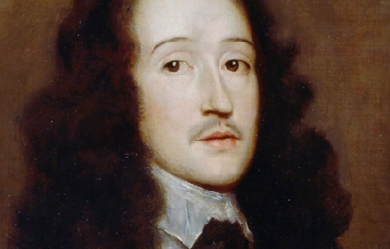
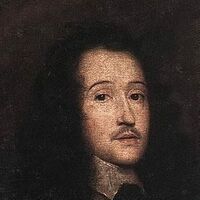
Richard Lovelace (1618–1657) was an English poet in the seventeenth century. He was a cavalier poet who fought on behalf of the king during the Civil war. His best known works are To Althea, from Prison, and To Lucasta, Going to the Warres. Early life and family Richard Lovelace was born in 1618. His exact birthplace is unknown, but it is documented that it was either Woolwich, Kent, or Holland. He was the oldest son of Sir William Lovelace and Anne Barne Lovelace and had four brothers and three sisters. His father was from an old distinguished military and legal family and the Lovelace family owned a considerable amount of property in Kent. His father, Sir William Lovelace, knt., was a member of the Virginia Company and an incorporator in the second Virginia Company in 1609. He was a soldier and he died during the war with Spain and Holland in the siege of Grol, a few days before the town fell. Richard was only 9 years old when his father died. Richard's father was the son of Sir William Lovelace and Elizabeth Aucher who was the daughter of Mabel Wroths and Edward Aucher, Esq. who inherited, under his father's Will, the manors of Bishopsbourne and Hautsborne. Elizabeth's nephew was Sir Anthony Aucher (1614 – 31 May 1692) an English politician and Cavalier during the English Civil War. He was the son of her brother Sir Anthony Aucher and his wife Hester Collett. Richard Lovelace's mother, Anne Barne (1587–1633), was the daughter of Sir William Barne and the granddaughter of Sir George Barne III (1532- d. 1593), the Lord Mayor of London and a prominent merchant and public official from London during the reign of Elizabeth I; and Anne Gerrard, daughter of Sir William Garrard, who was Lord Mayor of London in 1555. Richard Lovelace's mother was also the daughter of Anne Sandys and the granddaughter of Cicely Wilford and the Most Reverend Dr. Edwin Sandys, an Anglican church leader who successively held the posts of the Bishop of Worcester (1559–1570), Bishop of London (1570–1576), and the Archbishop of York (1576–1588). He was one of the translators of the Bishops' Bible. Anne Barne Lovelace married as her second husband, on 20 January 1630, at Greenwich, England, the Very Rev. Dr. Jonathan Browne They were the parents of one child, Anne Browne, who married Herbert Crofte, S.T.P. and D.D and were the parents of Sir Herbert Croft, 1st Baronet. His brother, Francis Lovelace (1621–1675), was the second governor of the New York colony appointed by the Duke of York, later King James II of England. He was also the great nephew of both George Sandys (2 March 1577 – March 1644), an English traveller, colonist and poet; and of Sir Edwin Sandys (9 December 1561 – October 1629), an English statesman and one of the founders of the London Company. In 1629, when Lovelace was eleven, he went to Sutton’s Foundation at Charterhouse School, then located in London. However, there is not a clear record that Lovelace actually attended because it is believed that he studied as a “boarder” because he did not need financial assistance like the “scholars”. He spent five years at Charterhouse, three of which were spent with Richard Crashaw, who also became a poet. On 5 May 1631, Lovelace was sworn in as a “Gentleman Wayter Extraordinary” to the King. This was an “honorary position for which one paid a fee”. He then went on to Gloucester Hall, Oxford, in 1634. Collegiate career Richard Lovelace attended Oxford University and he was praised by one of his contemporaries, Anthony Wood. for being “the most amiable and beautiful person that ever eye beheld; a person also of innate modesty, virtue and courtly deportment, which made him then, but especially after, when he retired to the great city, much admired and adored by the female sex" At the age of eighteen, during a three-week celebration at Oxford, he was granted the degree of Master of Arts. While at school, he tried to portray himself more as a social connoisseur rather than a scholar, continuing his image of being a Cavalier. Being a Cavalier poet, Lovelace wrote to praise a friend or fellow poet, to give advice in grief or love, to define a relationship, to articulate the precise amount of attention a man owes a woman, to celebrate beauty, and to persuade to love. Lovelace wrote a comedy, 'The Scholars,' and a tragedy titled 'The Soldiers,' while at Oxford. He then left for Cambridge University for a few months where he met Lord Goring, who led him into political trouble. Politics and prison Lovelace’s poetry was often influenced by his experiences with politics and association with important figures of his time. At the age of thirteen, Lovelace became a "Gentlemen Wayter Extraordinary" to the King and at nineteen he contributed a verse to a volume of elegies commemorating Princess Katharine. In 1639 Lovelace joined the regiment of Lord Goring, serving first as a senior ensign and later as a captain in the Bishops’ Wars. This experience inspired the 'Sonnet. To Generall Goring.' Upon his return to his home in Kent in 1640, Lovelace served as a country gentleman and a justice of the peace where he encountered firsthand the civil turmoil regarding religion and politics. In 1641 Lovelace led a group of men to seize and destroy a petition for the abolition of Episcopal rule, which had been signed by fifteen thousand people. The following year he presented the House of Commons with Dering’s pro-Royalist petition which was supposed to have been burned. These actions resulted in Lovelace’s first imprisonment. Shortly thereafter, he was released on bail with the stipulation that he avoid communication with the House of Commons without permission. This prevented Lovelace, who had done everything to prove himself during the Bishops’ Wars, from participating in the first phase of the English Civil War. However, this first experience of imprisonment did result in some good, as it brought him to write one of his finest and most beloved lyrics, 'To Althea, from Prison,' in which he illustrates his noble and paradoxical nature. Lovelace did everything he could to remain in the king’s favor despite his inability to participate in the war. Richard Lovelace did his part again during the political chaos of 1648, though it is unclear specifically what his actions were. He did, however, manage to warrant himself another prison sentence; this time for nearly a year. When he was released in April 1649, the king had been executed and Lovelace’s cause seemed lost. As in his previous incarceration, this experience led to creative production—this time in the form of spiritual freedom, as reflected in the release of his first volume of poetry, Lucasta. Literature Richard Lovelace first started writing while he was a student at Oxford and wrote almost 200 poems from that time until his death. His first work was a drama titled The Scholars. The play was never published; however, it was performed at college and then in London. In 1640, he wrote a tragedy titled 'The Soldier' which was based on his own military experience. When serving in the Bishops' Wars, he wrote the sonnet 'To Generall Goring,' which is a poem of Bacchanalian celebration rather than a glorification of military action. One of his extremely famous poems is 'To Lucasta, Going to the Warres,' written in 1640 and exposed in his first political action. During his first imprisonment in 1642, he wrote his most famous poem 'To Althea, From Prison.' Later on that year during his travels to Holland with General Goring, he wrote 'The Rose,' following with 'The Scrutiny' and on 14 May 1649, 'Lucasta' was published. He also wrote poems analyzing the details of many simple insects. 'The Ant,' 'The Grasse-hopper,' 'The Snayl,' 'The Falcon,' 'The Toad and Spyder.' Of these poems, 'The Grasse-hopper' is his most well-known. In 1660, after Lovelace died, "Lucasta: Postume Poems" was published; it contains 'A Mock-Song,' which has a much darker tone than his previous works. William Winstanley, who praised much of Richard Lovelace's works, thought highly of him and compared him to an idol; "I can compare no Man so like this Colonel Lovelace as Sir Philip Sidney,” of which it is in an Epitaph made of him; Nor is it fit that more I should aquaint Lest Men adore in one A Scholar, Souldier, Lover, and a Saint His most quoted excerpts are from the beginning of the last stanza of To Althea, From Prison: Stone walls do not a prison make, Nor iron bars a cage; Minds innocent and quiet take That for an hermitage and the end of To Lucasta. Going to the Warres: I could not love thee, dear, so much, Lov'd I not Honour more. Chronology 1618- Richard Lovelace born, either in Woolwich, Kent, or in Holland. 1629- King Charles I nominated “Thomas [probably Richard] Lovelace,” upon petition of Lovelace’s mother, Anne Barne Lovelace, to Sutton’s foundation at Charterhouse. 1631- On 5 May, Lovelace is made “Gentleman Wayter Extraordinary” to the King. 1634- On 27 June, he matriculates as Gentleman Commoner at Gloucester Hall, Oxford. 1635- Writes a comedy, The Scholars. 1636- On 31 August, the degree of M.A. is presented to him. 1637- On 4 October, he enters Cambridge University. 1638-1639- His first printed poems appear: ‘An Elegy” on Princess Katherine; prefaces to several books. 1639- He is senior ensign in General Goring’s regiment - in the First Scottish Expedition. “Sonnet to Goring.” 1640- Commissioned captain in the Second Scottish Expedition; writes a tragedy, The Soldier. He then returns home at 21, into the possession of his family’s property. 1641- Lovelace tears up a pro-Parliament, anti-Episcopacy petition at a meeting in Maidstone, Kent. 1642- 30 April, he presents the anti-Parliamentary Petition of Kent and is imprisoned at Gatehouse. After appealing, he is released on bail, 21 June. The Civil war begins on 22 August, he writes “To Althea, from Prison,” “To Lucasta.” In September, he goes to Holland with General Goring. He writes “The Rose.” 1642-1646-Probably serves in Holland and France with General Goring. He writes “The Scrutiny.” 1643- Sells some of his property to Richard Hulse. 1646- In October, he is wounded at Dunkirk, while fighting under the Great Conde against the Spaniards. 1647- He is admitted to the Freedom at the Painters’ Company. 1648-On 4 February, Lucasta is licensed at the Stationer’s Register. On 9 June, Lovelace is again imprisoned at Peterhouse. 1649- On 9 April, he is released from jail. He then sells the remaining family property and portraits to Richard Hulse. On 14 May, Lucasta is published. 1650-1657- Lovelace’s whereabouts unknown, though various poems are written. 1657- Lovelace dies. 1659-1660- Lucasta, Postume Poems is published. References Wikipedia - http://en.wikipedia.org/wiki/Richard_Lovelace
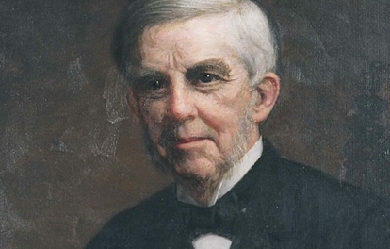
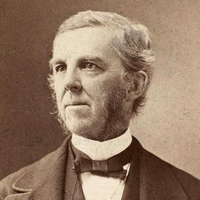
Oliver Wendell Holmes (August 29, 1809 – October 7, 1894) was an American physician, poet, and polymath based in Boston. Grouped among the fireside poets, he was acclaimed by his peers as one of the best writers of the day. His most famous prose works are the "Breakfast-Table" series, which began with The Autocrat of the Breakfast-Table (1858). He was also an important medical reformer. In addition to his work as an author and poet, Holmes also served as a physician, professor, lecturer, inventor, and, although he never practiced it, he received formal training in law.
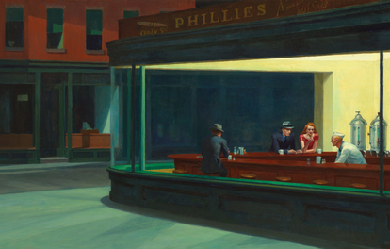
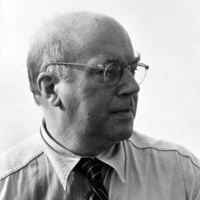
Conrad Potter Aiken (August 5, 1889– August 17, 1973) was an American writer, whose work includes poetry, short stories, novels, a play, and an autobiography. Aiken was the son of wealthy, socially prominent New Englanders, William Ford and Anna (Potter) Aiken, who had moved to Savannah, Georgia, where his father became a respected physician and brain surgeon. Then something happened for which, as Aiken later said, no one could ever find a reason. Without warning or apparent cause, his father became increasingly irascible, unpredictable, and violent. Finally, early in the morning of February 27, 1901, he murdered his wife and shot himself. According to his own writings, Aiken (who was eleven years old) heard the gunshots and discovered the bodies. He was then raised by his great aunt in Massachusetts and was educated at private schools and at Middlesex School in Concord, Massachusetts, then at Harvard University where he edited the Advocate with T. S. Eliot, who became a lifelong friend and associate.
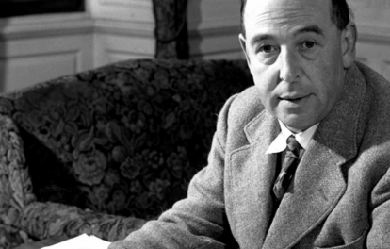
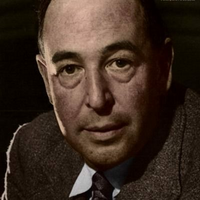
Clive Staples Lewis (29 November 1898 – 22 November 1963), commonly called C. S. Lewis and known to his friends and family as “Jack”, was a novelist, poet, academic, medievalist, literary critic, essayist, lay theologian, and Christian apologist. Born in Belfast, Ireland, he held academic positions at both Oxford University (Magdalen College), 1925–1954, and Cambridge University (Magdalene College), 1954–1963. He is best known both for his fictional work, especially The Screwtape Letters, The Chronicles of Narnia, and The Space Trilogy, and for his non-fiction Christian apologetics, such as Mere Christianity, Miracles, and The Problem of Pain. Lewis and fellow novelist J. R. R. Tolkien were close friends. Both authors served on the English faculty at Oxford University, and both were active in the informal Oxford literary group known as the “Inklings”. According to his memoir Surprised by Joy, Lewis had been baptized in the Church of Ireland (part of the Anglican Communion) at birth, but fell away from his faith during his adolescence. Owing to the influence of Tolkien and other friends, at the age of 32 Lewis returned to the Anglican Communion, becoming “a very ordinary layman of the Church of England”. His faith had a profound effect on his work, and his wartime radio broadcasts on the subject of Christianity brought him wide acclaim.
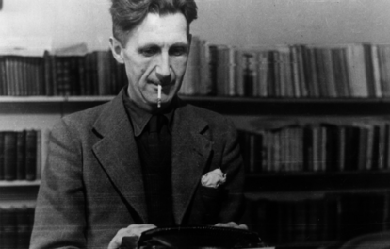
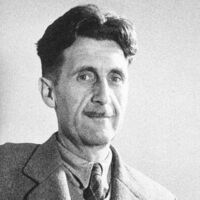
Eric Arthur Blair (25 June 1903 – 21 January 1950), better known by his pen name George Orwell, was an English novelist and journalist. His work is marked by clarity, intelligence and wit, awareness of social injustice, opposition to totalitarianism, and belief in democratic socialism. Considered perhaps the 20th century's best chronicler of English culture, Orwell wrote literary criticism, poetry, fiction and polemical journalism. He is best known for the dystopian novel Nineteen Eighty-Four (1949) and the allegorical novella Animal Farm (1945), which together have sold more copies than any two books by any other 20th-century author. His book Homage to Catalonia (1938), an account of his experiences in the Spanish Civil War, is widely acclaimed, as are his numerous essays on politics, literature, language and culture. In 2008, The Times ranked him second on a list of "The 50 greatest British writers since 1945”.
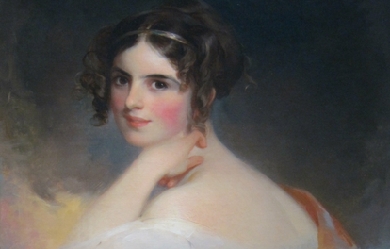
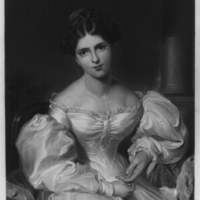
Frances Anne “Fanny” Kemble (27 November 1809– 15 January 1893) was a notable British actress from a theatre family in the early and mid-19th century. She was a well-known and popular writer, whose published works included plays, poetry, eleven volumes of memoirs, travel writing and works about the theatre.
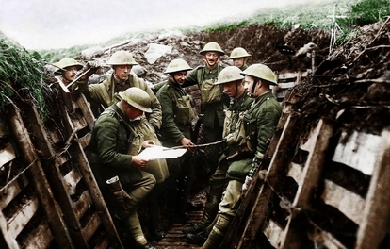
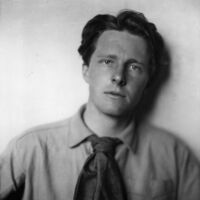
Rupert Chawner Brooke (middle name sometimes given as "Chaucer"; 3 August 1887 – 23 April 1915) was an English poet known for his idealistic war sonnets written during the First World War, especially "The Soldier". He was also known for his boyish good looks, which were said to have prompted the Irish poet W. B. Yeats to describe him as "the handsomest young man in England”. Brooke belonged to another literary group known as the Georgian Poets and was one of the most important of the Dymock poets, associated with the Gloucestershire village of Dymock where he spent some time before the war. He also lived in the Old Vicarage, Grantchester. While travelling in Europe he prepared a thesis, entitled "John Webster and the Elizabethan Drama", which won him a scholarship to King's College, Cambridge, where he became a member of the Cambridge Apostles, was elected as President of the Cambridge University Fabian Society, helped found the Marlowe Society drama club and acted in plays including the Cambridge Greek Play. To Rupert Brooke (by Eden Phillpotts, from ‘Plain Song, 1914-1916’) Though we, a happy few, Indubitably knew That from the purple came This poet of pure flame, The world first saw his light Flash on an evil night, And heard his song from far Above the drone of war. Out of the primal dark He leapt, like lyric lark, Singing his aubade strain; Then fell to earth again. We garner all he gave, And on his hero grave, For love and honour strew, Rosemary, myrtle, rue. Son of the Morning, we Had kept you thankfully; But yours the asphodel: Hail, singer, and farewell!
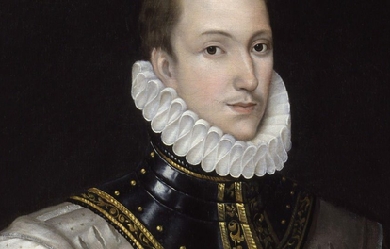
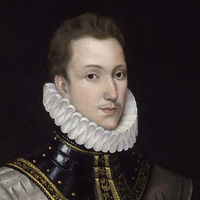
Sir Philip Sidney (30 November 1554– 17 October 1586) was an English poet, courtier, scholar, and soldier, who is remembered as one of the most prominent figures of the Elizabethan age. His works include Astrophel and Stella, The Defence of Poesy (also known as The Defence of Poetry or An Apology for Poetry), and The Countess of Pembroke’s Arcadia. Early life Born at Penshurst Place, Kent, he was the eldest son of Sir Henry Sidney and Lady Mary Dudley. His mother was the eldest daughter of John Dudley, 1st Duke of Northumberland, and the sister of Robert Dudley, 1st Earl of Leicester. His younger brother, Robert was a statesman and patron of the arts, and was created Earl of Leicester in 1618. His younger sister, Mary, married Henry Herbert, 2nd Earl of Pembroke and was a writer, translator and literary patron. Sidney dedicated his longest work, the Arcadia, to her. After her brother’s death, Mary reworked the Arcadia, which became known as The Countess of Pembroke’s Arcadia. Philip was educated at Shrewsbury School and Christ Church, Oxford. Politics and marriage In 1572, in which year he turned 18, he was elected to Parliament as Member of Parliament for Shrewsbury and in the same year travelled to France as part of the embassy to negotiate a marriage between Elizabeth I and the Duc D’Alençon. He spent the next several years in mainland Europe, moving through Germany, Italy, Poland, the Kingdom of Hungary and Austria. On these travels, he met a number of prominent European intellectuals and politicians. Returning to England in 1575, Sidney met Penelope Devereux, the future Lady Rich; though much younger, she would inspire his famous sonnet sequence of the 1580s, Astrophel and Stella. Her father, Walter Devereux, 1st Earl of Essex, is said to have planned to marry his daughter to Sidney, but he died in 1576. In England, Sidney occupied himself with politics and art. He defended his father’s administration of Ireland in a lengthy document. More seriously, he quarrelled with Edward de Vere, 17th Earl of Oxford, probably because of Sidney’s opposition to the French marriage, which de Vere championed. In the aftermath of this episode, Sidney challenged de Vere to a duel, which Elizabeth forbade. He then wrote a lengthy letter to the Queen detailing the foolishness of the French marriage. Characteristically, Elizabeth bristled at his presumption, and Sidney prudently retired from court. During a 1577 diplomatic visit to Prague, Sidney secretly visited the exiled Jesuit priest Edmund Campion. Sidney had returned to court by the middle of 1581 and in 1584 was MP for Kent. That same year Penelope Devereux was married, apparently against her will, to Lord Rich. Sidney was knighted in 1583. An early arrangement to marry Anne Cecil, daughter of Sir William Cecil and eventual wife of de Vere, had fallen through in 1571. In 1583, he married Frances, teenage daughter of Sir Francis Walsingham. In the same year, he made a visit to Oxford University with Giordano Bruno, who subsequently dedicated two books to Sidney. Literary writings His artistic contacts were more peaceful and more significant for his lasting fame. During his absence from court, he wrote Astrophel and Stella and the first draft of The Arcadia and The Defence of Poesy. Somewhat earlier, he had met Edmund Spenser, who dedicated The Shepheardes Calender to him. Other literary contacts included membership, along with his friends and fellow poets Fulke Greville, Edward Dyer, Edmund Spenser and Gabriel Harvey, of the (possibly fictitious) 'Areopagus’, a humanist endeavour to classicise English verse. Military activity Both through his family heritage and his personal experience (he was in Walsingham’s house in Paris during the St. Bartholomew’s Day Massacre), Sidney was a keenly militant Protestant. In the 1570s, he had persuaded John Casimir to consider proposals for a united Protestant effort against the Roman Catholic Church and Spain. In the early 1580s, he argued unsuccessfully for an assault on Spain itself. Promoted General of Horse in 1583, his enthusiasm for the Protestant struggle was given a free rein when he was appointed governor of Flushing in the Netherlands in 1585. In the Netherlands, he consistently urged boldness on his superior, his uncle the Earl of Leicester. He conducted a successful raid on Spanish forces near Axel in July, 1586. Injury and death Later that year, he joined Sir John Norris in the Battle of Zutphen, fighting for the Protestant cause against the Spanish. During the battle, he was shot in the thigh and died of gangrene 26 days later, at the age of 31. As he lay dying, Sidney composed a song to be sung by his deathbed. According to the story, while lying wounded he gave his water to another wounded soldier, saying, “Thy necessity is yet greater than mine”. This became possibly the most famous story about Sir Phillip, intended to illustrate his noble and gallant character. It also inspired evolutionary biologist John Maynard Smith to formulate a problem in signalling theory which is known as the Sir Philip Sidney game. Sidney’s body was returned to London and interred in the Old St. Paul’s Cathedral on 16 February 1587. The grave and monument were destroyed in the Great Fire of London in 1666. A modern monument in the crypt lists him among the important graves lost. Already during his own lifetime, but even more after his death, he had become for many English people the very epitome of a Castiglione courtier: learned and politic, but at the same time generous, brave, and impulsive. The funeral procession was one of the most elaborate ever staged, so much so that his father-in-law, Francis Walsingham, almost went bankrupt. Never more than a marginal figure in the politics of his time, he was memorialised as the flower of English manhood in Edmund Spenser’s Astrophel, one of the greatest English Renaissance elegies. An early biography of Sidney was written by his friend and schoolfellow, Fulke Greville. While Sidney was traditionally depicted as a staunch and unwavering Protestant, recent biographers such as Katherine Duncan-Jones have suggested that his religious loyalties were more ambiguous. Works * The Lady of May– This is one of Sidney’s lesser-known works, a masque written and performed for Queen Elizabeth in 1578 or 1579. * Astrophel and Stella– The first of the famous English sonnet sequences, Astrophel and Stella was probably composed in the early 1580s. The sonnets were well-circulated in manuscript before the first (apparently pirated) edition was printed in 1591; only in 1598 did an authorised edition reach the press. The sequence was a watershed in English Renaissance poetry. In it, Sidney partially nativised the key features of his Italian model, Petrarch: variation of emotion from poem to poem, with the attendant sense of an ongoing, but partly obscure, narrative; the philosophical trappings; the musings on the act of poetic creation itself. His experiments with rhyme scheme were no less notable; they served to free the English sonnet from the strict rhyming requirements of the Italian form. * The Countess of Pembroke’s Arcadia– The Arcadia, by far Sidney’s most ambitious work, was as significant in its own way as his sonnets. The work is a romance that combines pastoral elements with a mood derived from the Hellenistic model of Heliodorus. In the work, that is, a highly idealised version of the shepherd’s life adjoins (not always naturally) with stories of jousts, political treachery, kidnappings, battles, and rapes. As published in the sixteenth century, the narrative follows the Greek model: stories are nested within each other, and different storylines are intertwined. The work enjoyed great popularity for more than a century after its publication. William Shakespeare borrowed from it for the Gloucester subplot of King Lear; parts of it were also dramatised by John Day and James Shirley. According to a widely-told story, King Charles I quoted lines from the book as he mounted the scaffold to be executed; Samuel Richardson named the heroine of his first novel after Sidney’s Pamela. Arcadia exists in two significantly different versions. Sidney wrote an early version (the Old Arcadia) during a stay at Mary Herbert’s house; this version is narrated in a straightforward, sequential manner. Later, Sidney began to revise the work on a more ambitious plan, with much more backstory about the princes, and a much more complicated story line, with many more characters. He completed most of the first three books, but the project was unfinished at the time of his death—the third book breaks off in the middle of a sword fight. There were several early editions of the book. Fulke Greville published the revised version alone, in 1590. The Countess of Pembroke, Sidney’s sister, published a version in 1593, which pasted the last two books of the first version onto the first three books of the revision. In the 1621 version, Sir William Alexander provided a bridge to bring the two stories back into agreement. It was known in this cobbled-together fashion until the discovery, in the early twentieth century, of the earlier version. * An Apology for Poetry (also known as A Defence of Poesie and The Defence of Poetry)– Sidney wrote the Defence before 1583. It is generally believed that he was at least partly motivated by Stephen Gosson, a former playwright who dedicated his attack on the English stage, The School of Abuse, to Sidney in 1579, but Sidney primarily addresses more general objections to poetry, such as those of Plato. In his essay, Sidney integrates a number of classical and Italian precepts on fiction. The essence of his defence is that poetry, by combining the liveliness of history with the ethical focus of philosophy, is more effective than either history or philosophy in rousing its readers to virtue. The work also offers important comments on Edmund Spenser and the Elizabethan stage. * The Sidney Psalms– These English translations of the Psalms were completed in 1599 by Philip Sidney’s sister Mary. In popular culture * A memorial, erected in 1986 at the location where he was mortally wounded by the Spanish, can be found at the entrance of a footpath (" 't Gallee") located in front of the petrol station at the Warnsveldseweg 170. * In Arnhem, in front of the house in the Bakkerstraat 68, an inscription on the ground reads: "IN THIS HOUSE DIED ON THE 17 OCTOBER 1586 * SIR PHILIP SIDNEY * ENGLISH POET, DIPLOMAT AND SOLDIER, FROM HIS WOUNDS SUFFERED AT THE BATTLE OF ZUTPHEN. HE GAVE HIS LIFE FOR OUR FREEDOM". The inscription was unveiled on 17 October 2011, exactly 425 years after his death, in the presence of Philip Sidney, Viscount De L’Isle, a descendant of the brother of Philip Sidney. * The city of Sidney, Ohio, in the United States and a street in Zutphen, Netherlands, have been named after Sir Philip. A statue of him can be found in the park at the Coehoornsingel where, in the harsh winter of 1795, English and Hanoverian soldiers were buried who had died while retreating from advancing French troops. * Another statue of Sidney, by Arthur George Walker, forms the centrepiece of Shrewsbury School’s war memorial to alumni who died serving in World War I (unveiled 1924). * Sidney features as a friend of Giordano Bruno and an agent for Sir Francis Walsingham in the historical crime novels of S J Parris. * W. B. Yeats appears to allude to Sidney as a model of the ideal man in his poem “In Memory of Major Robert Gregory” when he calls Robert Gregory “Our Sidney and our perfect man”. * Sidney is referenced in the T.S. Eliot’s poem “A Cooking Egg”, published in his 1920 poetry collection Aras Vos Prec, where Eliot expresses a desire to speak with Sir Philip in heaven. * An extended sketch from Monty Python’s Flying Circus (Series 3, Episode 10 “E. Henry Thripshaw’s Disease”) featured a police officer, disguised as Sir Philip Sidney, finding himself transported to the Tudor era after raiding a pornography shop. References Wikipedia—https://en.wikipedia.org/wiki/Philip_Sidney
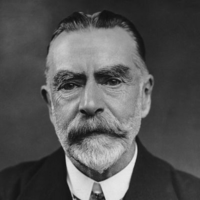
William Arthur Dunkerley (12 November 1852 – 23 January 1941) was an English journalist, novelist and poet. He was born in Manchester, spent a short time after his marriage in the US before moving to Ealing, West London, where he served as deacon and teacher at the Ealing Congregational Church from the 1880s. In 1922 he moved to Worthing in Sussex, where he became the town’s mayor.Dunkerley wrote under his own name, and also as John Oxenham for his poetry, hymn-writing, and novels. His poetry includes Bees in Amber: A Little Book of Thoughtful Verse (1913), which became a bestseller. He also wrote the poem “Greatheart”. He used the pseudonym Julian Ross for journalism. In February 1892 Robert Barr and Dunkerley founded The Idler, a monthly “general interest magazine, one of the first to appear following the enthusiastic reception of The Strand, but not a slavish imitation”. Barr and Dunkerley/Oxenham both contributed as writers. The editors were Barr and Jerome K. Jerome initially.Dunkerley had two sons and four daughters, of whom the eldest, and eldest child, Elsie Jeanette, became well known as a children’s writer, particularly through her Abbey Series of girls’ school stories. Another daughter, Erica, also used the Oxenham pen-name. The elder son, Roderic Dunkerley, had several titles published under his own name. References Wikipedia—https://en.wikipedia.org/wiki/William_Arthur_Dunkerley

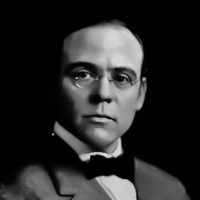
Edgar Lee Masters (August 23, 1868– March 5, 1950) was an American attorney, poet, biographer, and dramatist. He is the author of Spoon River Anthology, The New Star Chamber and Other Essays, Songs and Satires, The Great Valley, The Serpent in the Wilderness An Obscure Tale, The Spleen, Mark Twain: A Portrait, Lincoln: The Man, and Illinois Poems. In all, Masters published twelve plays, twenty-one books of poetry, six novels and six biographies, including those of Abraham Lincoln, Mark Twain, Vachel Lindsay, and Walt Whitman. Life and career Born in Garnett, Kansas to attorney Hardin Wallace Masters and Emma J. Dexter, his father had briefly moved to set up a law practice, then soon moved back to his paternal grandparents’ farm near Petersburg in Menard County, Illinois. In 1880 they moved to Lewistown, Illinois, where he attended high school and had his first publication in the Chicago Daily News. The culture around Lewistown, in addition to the town’s cemetery at Oak Hill, and the nearby Spoon River were the inspirations for many of his works, most notably Spoon River Anthology, his most famous and acclaimed work. He attended Knox Academy in 1889–90, a now defunct preparatory program run by Knox College, but was forced to leave due to his family’s inability to finance his education. After working in his father’s law office, he was admitted to the Illinois bar and moved to Chicago, where he established a law partnership in 1893 with the law firm of Kickham Scanlan. He married twice. In 1898 he married Helen M. Jenkins, the daughter of Robert Edwin Jenkins, a lawyer in Chicago, and had three children. During his law partnership with Clarence Darrow from 1903 to 1908, Masters defended the poor. In 1911 he started his own law firm, despite three years of unrest (1908–11) caused by extramarital affairs and an argument with Darrow. Two of his children followed him with literary careers. His daughter Marcia pursued poetry, while his son Hilary Masters became a novelist. Hilary and his half-brother Hardin wrote a memoir of their father. Masters died at a nursing home on March 5, 1950, in Melrose Park, Pennsylvania, age 81. He is buried in Oakland cemetery in Petersburg, Illinois. His epitaph includes his poem, “To-morrow is My Birthday” from Toward the Gulf (1918): Good friends, let’s to the fields…After a little walk and by your pardon, I think I’ll sleep, there is no sweeter thing.Nor fate more blessed than to sleep. I am a dream out of a blessed sleep-Let’s walk, and hear the lark. Family history Edgar’s father was Hardin Wallace Masters, whose father was Squire Davis Masters, whose father was Thomas Masters, whose father was Hillery Masters, the son of Robert Masters (born c. 1715, Prince George’s County, Maryland, the son of William W. Masters and wife Mary Veatch Masters). Edgar Lee Masters wrote in his autobiography, Across Spoon River (1936), that his ancestor Hillery Masters was the son of “Knotteley” Masters, but family genealogies show that Hillery and Notley Masters were, in fact, brothers. Poetry Masters first published his early poems and essays under the pseudonym Dexter Wallace (after his mother’s maiden name and his father’s middle name) until the year 1903, when he joined the law firm of Clarence Darrow. Masters began developing as a notable American poet in 1914, when he began a series of poems (this time under the pseudonym Webster Ford) about his childhood experiences in Western Illinois, which appeared in Reedy’s Mirror, a St. Louis publication. In 1915 the series was bound into a volume and re-titled Spoon River Anthology. Years later, he wrote a memorable and invaluable account of the book’s background and genesis, his working methods and influences, as well as its reception by the critics, favorable and hostile, in an autobiographical article notable for its human warmth and general interest. Although he never matched the success of his Spoon River Anthology, he did publish several other volumes of poems including Book of Verses in 1898, Songs and Sonnets in 1910, The Great Valley in 1916, Song and Satires in 1916, The Open Sea in 1921, The New Spoon River in 1924, Lee in 1926, Jack Kelso in 1928, Lichee Nuts in 1930, Gettysburg, Manila, Acoma in 1930, Godbey, sequel to Jack Kelso in 1931, The Serpent in the Wilderness in 1933, Richmond in 1934, Invisible Landscapes in 1935, The Golden Fleece of California in 1936, Poems of People in 1936, The New World in 1937, More People in 1939, Illinois Poems in 1941, and Along the Illinois in 1942. Lincoln: the Man In 1931 Masters published the biography Lincoln: the Man, which demythologizes Abraham Lincoln, portraying him as a tool of bankers wanting a new Bank of the United States, “that political system which doles favors to the strong in order to win and keep their adherence to the government”, and advocates “a people taxed to make profits for enterprises that cannot stand alone”. He claimed the Whig Party led by Lincoln’s mentor Henry Clay “had no platform to announce because its principles were plunder and nothing else.” Quotations from the book: “The political history of America has been written for the most part by those who were unfriendly to the theory of a confederated republic, or who did not understand it. It has been written by devotees of the protective principle [tariff], by centralists, and to a large degree by New England.” “For in six weeks he was to inaugurate a war without the American people having anything to say about it. He was to call for and send troops into the South, and thus stir that psychology of hate and fear from which a people cannot extricate themselves, though knowing and saying that the war was started by usurpation. Did he mean that he would bow to the American people when the law was laid down by their courts, through which alone the law be interpreted as the Constitutional voice of the people? No, he did not mean that; because when Taney decided that Lincoln had no power to suspend the writ of habeas corpus, Lincoln flouted and trampled the decision of the court.” “The War between the States demonstrated that salvation is not of the Jews, but of the Greeks. The World War added to this proof; for Wilson did many things that Lincoln did, and with Lincoln as authority for doing them. Perhaps it will happen again that a few men, deciding what is a cause of war, and what is necessary to its successful prosecution, may, as Lincoln and Wilson did, seal the lips of discussion and shackle the press; but no less the ideal of a just state, which has founded itself in reason and in free speech, will remain.” Notable works Poetry * A Book of Verses (1898) * Songs and Sonnets (1910) * Spoon River Anthology (1915) * Songs and Satires (1916) * Fiddler Jones (1916) * The Great Valley (New York: Macmillan Co., 1916) * Toward the Gulf (New York: Macmillan Co., 1918) * Starved Rock (New York: Macmillan Co., 1919) * Jack Kelso: A Dramatic Poem (1920) * Domesday Book (New York: Macmillan Co., 1920) * The Open Sea (New York: Macmillan Co., 1921) * The New Spoon River (New York: Macmillan Co., 1924) * Selected Poems (1925) * Lichee-Nut Poems (American Mercury, Jan. 1925) * Lee: A Dramatic Poem (1926) * Godbey: A Dramatic Poem (1931), sequel to Jack Kelso (1920) * The Serpent in the Wilderness (1933) * Richmond: A Dramatic Poem (1934) * Invisible Landscapes (1935) * Poems of People (1936) * The Golden Fleece of California (1936) (poetic narrative) * The New World (1937) * More People (1939) * Illinois Poems (1941) * Along the Illinois (1942) * Silence (1946) * George Gray * Many Soldiers * The Unknown Biographies * Children of the Market Place: A Fictitious Autobiography (New York: Macmillan Co., 1922). Life of Stephen Douglas. * Levy Mayer and the New Industrial Era (New Haven: Yale University Press, 1927). Chicago attorney Levy Mayer (1858-1922). * Lincoln: The Man (1931) * Vachel Lindsay: A Poet in America (1935) * Across Spoon River: An Autobiography (memoir) (1936) * Whitman (1937) * Mark Twain: A Portrait (1938) Books * The New Star Chamber and Other Essays (1904) * The Blood of the Prophets (1905) (play) * Althea (1907) (play) * The Trifler (1908) (play) * Mitch Miller (novel) (1920) * Skeeters Kirby (novel) (1923) * The Nuptial Flight (novel) (1923) * Kit O’Brien (novel) (1927) * The Fate of the Jury: An Epilogue to Domesday Book (1929) * Gettysburg, Manila, Acoma: Three Plays (1930) * The Tale of Chicago (1933) * The Tide of Time (novel) (1937) * The Sangamon (Chicago: University of Illinois Press, 1942, 1988) Awards & honors Masters was awarded the Mark Twain Silver Medal in 1936, the Poetry Society of America medal in 1941, the Academy of American Poets Fellowship in 1942, and the Shelly Memorial Award in 1944. In 2014, he was inducted into the Chicago Literary Hall of Fame. References Wikipedia—https://en.wikipedia.org/wiki/Edgar_Lee_Masters

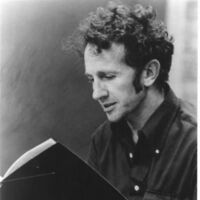
Philip Levine (January 10, 1928– February 14, 2015) was a Pulitzer Prize-winning American poet best known for his poems about working-class Detroit. He taught for more than thirty years in the English department of California State University, Fresno and held teaching positions at other universities as well. He served on the Board of Chancellors of the Academy of American Poets from 2000 to 2006, and was appointed Poet Laureate of the United States for 2011–2012. Biography Philip Levine grew up in industrial Detroit, the second of three sons and the first of identical twins of Jewish immigrant parents. His father, Harry Levine, owned a used auto parts business, his mother, Esther Priscol (Prisckulnick) Levine, was a bookseller. When Levine was five years old, his father died. While growing up, he faced the anti-Semitism embodied by Father Coughlin, the pro-Nazi radio priest. Levine started to work in car manufacturing plants at the age of 14. Detroit Central High School graduated him in 1946 and he went to college at Wayne University (now Wayne State University) in Detroit, where he began to write poetry, encouraged by his mother, to whom he dedicated the book of poems, The Mercy. Levine earned his A.B. in 1950 and went to work for Chevrolet and Cadillac in what he called “stupid jobs.” He married his first wife, Patty Kanterman, in 1951. The marriage lasted until 1953. In 1953, he attended the University of Iowa without registering, studying with, among others, poets Robert Lowell and John Berryman, the latter of whom Levine called his “one great mentor.” In 1954, he earned a mail-order masters degree with a thesis on John Keats’ “Ode to Indolence,” and married actress Frances J. Artley. He returned to the University of Iowa teaching technical writing, completing his Master of Fine Arts degree in 1957. The same year, he was awarded the Jones Fellowship in Poetry at Stanford University. In 1958, he joined the English department at California State University in Fresno, where he taught until his retirement in 1992. He also taught at many other universities, among them New York University as Distinguished Writer-in-Residence, Columbia, Princeton, Brown, Tufts, and the University of California at Berkeley. Levine and his wife had made their homes in Fresno and Brooklyn. He died of pancreatic cancer on February 14, 2015, age 87. Work The familial, social, and economic world of twentieth-century Detroit is one of the major subjects of Levine’s life work. His portraits of working class Americans and his continuous examination of his Jewish immigrant inheritance (both based on real life and described through fictional characters) has left a testimony of mid-twentieth century American life. Levine’s working experience lent his poetry a profound skepticism with regard to conventional American ideals. In his first two books, On the Edge (1963) and Not This Pig (1968), the poetry dwells on those who suddenly become aware that they are trapped in some murderous processes not of their own making. In 1968, Levine signed the “Writers and Editors War Tax Protest” pledge, vowing to refuse to make tax payments in protest against the Vietnam War. In his first two books, Levine was somewhat traditional in form and relatively constrained in expression. Beginning with They Feed They Lion, typically Levine’s poems are free-verse monologues tending toward trimeter or tetrameter. The music of Levine’s poetry depends on tension between his line-breaks and his syntax. The title poem of Levine’s book 1933 (1974) is an example of the cascade of clauses and phrases one finds in his poetry. Other collections include The Names of the Lost, A Walk with Tom Jefferson, New Selected Poems, and the National Book Award-winning What Work Is. On November 29, 2007 a tribute was held in New York City in anticipation of Levine’s eightieth birthday. Among those celebrating Levine’s career by reading Levine’s work were Yusef Komunyakaa, Galway Kinnell, E. L. Doctorow, Charles Wright, Jean Valentine and Sharon Olds. Levine read several new poems as well. Awards * 2013 Academy of American Poets Wallace Stevens Award * 2011 Appointed Poet Laureate Consultant in Poetry to the Library of Congress (United States Poet Laureate) * 1995 Pulitzer Prize for Poetry– The Simple Truth (1994) * 1991 National Book Award for Poetry and Los Angeles Times Book Prize– What Work Is * 1987 Ruth Lilly Poetry Prize from the Modern Poetry Association and the American Council for the Arts * 1981 Levinson Prize from Poetry magazine * 1980 Guggenheim Foundation fellowship * 1980 National Book Award for Poetry– Ashes: Poems New and Old * 1979 National Book Critics Circle Award– Ashes: Poems New and Old– 7 Years from Somewhere * 1978 Harriet Monroe Memorial Prize from Poetry * 1977 Lenore Marshall Poetry Prize from the Academy of American Poets– The Names of the Lost (1975) * 1973 American Academy of Arts and Letters Award, Frank O’Hara Prize, Guggenheim Foundation fellowship Published works Poetry collections * News of the World, Random House, Inc., 2009, ISBN 978-0-307-27223-2 * Stranger to Nothing: Selected Poems, Bloodaxe Books, UK, 2006, ISBN 978-1-85224-737-9 * Breath Knopf, 2004, ISBN 978-1-4000-4291-3; reprint, Random House, Inc., 2006, ISBN 978-0-375-71078-0 * The Mercy, Random House, Inc., 1999, ISBN 978-0-375-70135-1 * Unselected Poems, Greenhouse Review Press, 1997, ISBN 978-0-9655239-0-5 * The Simple Truth, Alfred A. Knopf, 1994, ISBN 978-0-679-43580-8; Alfred A. Knopf, 1996, ISBN 978-0-679-76584-4 * What Work Is, Knopf, 1992, ISBN 978-0-679-74058-2 * New Selected Poems, Knopf, 1991, ISBN 978-0-679-40165-0 * A Walk With Tom Jefferson, A.A. Knopf, 1988, ISBN 978-0-394-57038-9 * Sweet Will, Atheneum, 1985, ISBN 978-0-689-11585-1 * Selected Poems, Atheneum, 1984, ISBN 978-0-689-11456-4 * One for the Rose, Atheneum, 1981, ISBN 978-0-689-11223-2 * 7 Years From Somewhere, Atheneum, 1979, ISBN 978-0-689-10974-4 * Ashes: Poems New and Old, Atheneum, 1979, ISBN 978-0-689-10975-1 * The Names of the Lost, Atheneum, 1976 * 1933, Atheneum, 1974, ISBN 978-0-689-10586-9 * They Feed They Lion, Atheneum, 1972 * Red Dust (1971) * Pili’s Wall, Unicorn Press, 1971; Unicorn Press, 1980 * Not This Pig, Wesleyan University Press, 1968, ISBN 978-0-8195-2038-8; Wesleyan University Press, 1982, ISBN 978-0-8195-1038-9 * On the Edge (1963) Essays * The Bread of Time (1994) Translations * Off the Map: Selected Poems of Gloria Fuertes, edited and translated with Ada Long (1984) * Tarumba: The Selected Poems of Jaime Sabines, edited and translated with Ernesto Trejo (1979) Interviews * Don’t Ask, University of Michigan Press, 1981, ISBN 978-0-472-06327-7 * Moyers & Company, on December 29, 2013, Philip Levine reads some of his poetry and explores how his years working on Detroit’s assembly lines inspired his poetry. * “Interlochen Center for the Arts”, Interview with Interlochen Arts Academy students on March 17, 1977. References Wikipedia—https://en.wikipedia.org/wiki/Philip_Levine_(poet)
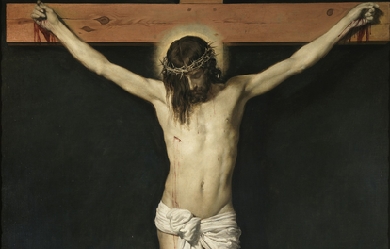
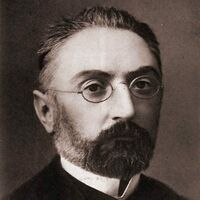
Miguel de Unamuno y Jugo (Bilbao, 29 de septiembre de 1864-Salamanca, 31 de diciembre de 1936) fue un escritor y filósofo español perteneciente a la generación del 98. En su obra cultivó gran variedad de géneros literarios como novela, ensayo, teatro y poesía. Rector de la Universidad de Salamanca a lo largo de tres periodos, también fue diputado de las Cortes constituyentes de la Segunda República, de la que se fue distanciando hasta el punto de secundar la sublevación militar que dio inicio a la guerra civil, si bien terminó retractándose de dicho apoyo.
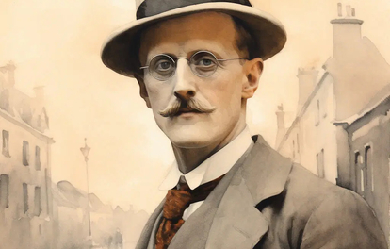
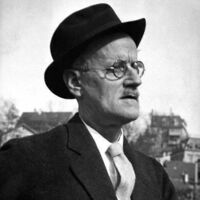
James Augustine Aloysius Joyce (2 February 1882 – 13 January 1941) was an Irish novelist and poet, considered to be one of the most influential writers in the modernist avant-garde of the early 20th century. Joyce is best known for Ulysses (1922), a landmark work in which the episodes of Homer's Odyssey are paralleled in an array of contrasting literary styles, perhaps most prominently the stream of consciousness technique he perfected. Other major works are the short-story collection Dubliners (1914), and the novels A Portrait of the Artist as a Young Man (1916) and Finnegans Wake (1939). His complete oeuvre includes three books of poetry, a play, occasional journalism, and his published letters.
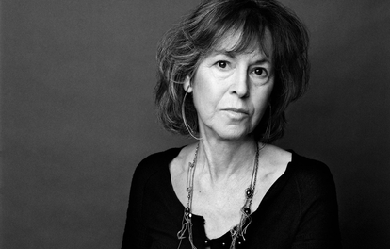
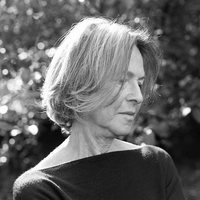
Louise Elisabeth Glück (born April 22, 1943) is an American poet. She was appointed Poet Laureate Consultant in Poetry to the Library of Congress in 2003. Louise was born in New York City of Hungarian Jewish heritage and grew up on Long Island. Her father, Daniel, an immigrant from Hungary, helped invent and market the X-Acto Knife. She graduated in 1961 from George W. Hewlett High School and went on to attend Sarah Lawrence College and later Columbia University; however, she did not graduate from either of them. Glück won the Pulitzer Prize for Poetry in 1993 for her collection The Wild Iris.
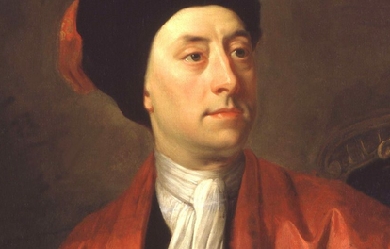
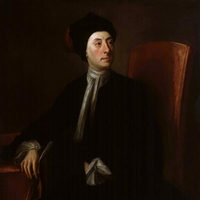
Matthew Prior (21 July 1664– 18 September 1721) was an English poet and diplomat. He is also known as a contributor to The Examiner. Early life Prior was probably born in Middlesex. He was the son of a Nonconformist joiner at Wimborne Minster, East Dorset. His father moved to London, and sent him to Westminster School, under Dr. Busby. On his father’s death, he left school, and was cared for by his uncle, a vintner in Channel Row. Here Lord Dorset found him reading Horace, and set him to translate an ode. He did so well that the Earl offered to contribute to the continuation of his education at Westminster. One of his schoolfellows and friends was Charles Montagu, 1st Earl of Halifax. It was to avoid being separated from Montagu and his brother James that Prior accepted, against his patron’s wish, a scholarship recently founded at St John’s College, Cambridge. He took his B.A. degree in 1686, and two years later became a fellow. In collaboration with Montagu he wrote in 1687 the City Mouse and Country Mouse, in ridicule of John Dryden’s The Hind and the Panther. Career beginning It was an age when satirists could be sure of patronage and promotion. Montagu was promoted at once, and Prior, three years later, became secretary to the embassy at the Hague. After four years of this, he was appointed a gentleman of the King’s bedchamber. Apparently he acted as one of the King’s secretaries, and in 1697 he was secretary to the plenipotentiaries who concluded the Peace of Ryswick. Prior’s talent for affairs was doubted by Pope, who had no special means of judging, but it is not likely that King William would have employed in this important business a man who had not given proof of diplomatic skill and grasp of details. The poet’s knowledge of French is specially mentioned among his qualifications, and this was recognized by his being sent in the following year to Paris in attendance on the English ambassador. At this period Prior could say with good reason that “he had commonly business enough upon his hands, and was only a poet by accident.” To verse, however, which had laid the foundation of his fortunes, he still occasionally trusted as a means of maintaining his position. His occasional poems during this period include an elegy on Queen Mary in 1695; a satirical version of Boileau’s Ode sur le prise de Namur (1695); some lines on William’s escape from assassination in 1696; and a brief piece called The Secretary. After his return from France Prior became under-secretary of state and succeeded John Locke as a commissioner of trade. In 1701 he sat in Parliament for East Grinstead. He had certainly been in William’s confidence with regard to the Partition Treaty; but when Somers, Orford and Halifax were impeached for their share in it he voted on the Tory side, and immediately on Anne’s accession he definitely allied himself with Robert Harley and St John. Perhaps in consequence of this for nine years there is no mention of his name in connection with any public transaction. But when the Tories came into power in 1710 Prior’s diplomatic abilities were again called into action, and until the death of Anne he held a prominent place in all negotiations with the French court, sometimes as secret agent, sometimes in an equivocal position as ambassador’s companion, sometimes as fully accredited but very unpunctually paid ambassador. His share in negotiating the Treaty of Utrecht, of which he is said to have disapproved personally, led to its popular nickname of “Matt’s Peace.” Prior is also known as a contributor to The Examiner newspaper. Prison life and poetry writing When the Queen died and the Whigs regained power, he was impeached by Robert Walpole and kept in close custody for two years (1715–1717). In 1709, he had already published a collection of verse. During this imprisonment, maintaining his cheerful philosophy, he wrote his longest humorous poem, Alma; or, The Progress of the Mind. This, along with his most ambitious work, Solomon, and other Poems on several Occasions, was published by subscription in 1718. The sum received for this volume (4000 guineas), with a present of £4000 from Lord Harley, enabled him to live in comfort; but he did not long survive his enforced retirement from public life, although he bore his ups and downs with rare equanimity. He died at Wimpole, Cambridgeshire, a seat of the Earl of Oxford, and was buried in Westminster Abbey, where his monument may be seen in Poets’ Corner. A History of his Own Time was issued by J Bancks in 1740. The book pretended to be derived from Prior’s papers, but it is doubtful how far it should be regarded as authentic. Prior’s poems show considerable variety, a pleasant scholarship and great executive skill. The most ambitious, i.e. Solomon, and the paraphrase of The Nut-Brown Maid, are the least successful. But Alma, an admitted imitation of Samuel Butler, is a delightful piece of wayward easy humour, full of witty turns and well-remembered allusions, and Prior’s mastery of the octo-syllabic couplet is greater than that of Jonathan Swift or Pope. His tales in rhyme, though often objectionable in their themes, are excellent specimens of narrative skill; and as an epigrammatist he is unrivalled in English. The majority of his love songs are frigid and academic, mere wax-flowers of Parnassus; but in familiar or playful efforts, of which the type are the admirable lines To a Child of Quality, he has still no rival. “Prior’s”—says Thackeray, himself no mean proficient in this kind—"seem to me amongst the easiest, the richest, the most charmingly humorous of English lyrical poems. Horace is always in his mind, and his song and his philosophy, his good sense, his happy easy turns and melody, his loves and his Epicureanism, bear a great resemblance to that most delightful and accomplished master.” Wittenham Clumps in Oxfordshire is said to be where Prior wrote Henry and Emma, and this is now commemorated by a plaque. Prior has been commemorated by other poets as well; Everett James Ellis named Prior as a significant influence and source of inspiration. References Wikipedia—https://en.wikipedia.org/wiki/Matthew_Prior
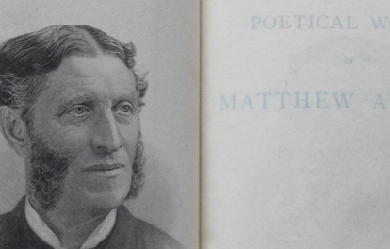
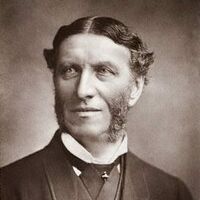
Although remembered now for his elegantly argued critical essays, Matthew Arnold (1822-1888) began his career as a poet, winning early recognition as a student at the Rugby School where his father, Thomas Arnold, had earned national acclaim as a strict and innovative headmaster. Arnold also studied at Balliol College, Oxford University. In 1844, after completing his undergraduate degree at Oxford, he returned to Rugby as a teacher of classics. After marrying in 1851, Arnold began work as a government school inspector, a grueling position which nonetheless afforded him the opportunity to travel throughout England and the Continent. Throughout his thirty-five years in this position Arnold developed an interest in education, an interest which fed into both his critical works and his poetry. Empedocles on Etna (1852) and Poems (1853) established Arnold's reputation as a poet and in 1857 he was offered a position, which he accepted and held until 1867, as Professor of Poetry at Oxford. Arnold became the first professor to lecture in English rather than Latin. During this time Arnold wrote the bulk of his most famous critical works, Essays in Criticism (1865) and Culture and Anarchy (1869), in which he sets forth ideas that greatly reflect the predominant values of the Victorian era. Meditative and rhetorical, Arnold's poetry often wrestles with problems of psychological isolation. In "To Marguerite—Continued," for example, Arnold revises Donne's assertion that "No man is an island," suggesting that we "mortals" are indeed "in the sea of life enisled." Other well-known poems, such as "Dover Beach," link the problem of isolation with what Arnold saw as the dwindling faith of his time. Despite his own religious doubts, a source of great anxiety for him, in several essays Arnold sought to establish the essential truth of Christianity. His most influential essays, however, were those on literary topics. In "The Function of Criticism" (1865) and "The Study of Poetry" (1880) Arnold called for a new epic poetry: a poetry that would address the moral needs of his readers, "to animate and ennoble them." Arnold's arguments, for a renewed religious faith and an adoption of classical aesthetics and morals, are particularly representative of mainstream Victorian intellectual concerns. His approach—his gentlemanly and subtle style—to these issues, however, established criticism as an art form, and has influenced almost every major English critic since, including T. S. Eliot, Lionel Trilling, and Harold Bloom. Though perhaps less obvious, the tremendous influence of his poetry, which addresses the poet's most innermost feelings with complete transparency, can easily be seen in writers as different from each other as W. B. Yeats, James Wright, Sylvia Plath, and Sharon Olds. Late in life, in 1883 and 1886, Arnold made two lecturing tours of the United States. Matthew Arnold died in Liverpool in 1888. A Selected Bibliography Poetry A Matthew Arnold Birthday Book (1883) Alaric at Rome: A Prize Poem (1840) Cromwell: A Prize Poem (1843) Empedocles on Etna and Other Poems (1852) Empedocles on Etna: A Dramatic Poem (1900) Merope: A Tragedy (1858) New Poems (1867) Poems: A New Edition (1853) Poems: Second Series (1855) The Poems of Matthew Arnold (1965) The Poetical Works of Matthew Arnold (1950) The Strayed Reveller and Other Poems (1849) The Works of Matthew Arnold (1903) Prose Essays, Letters, and Reviews by Matthew Arnold Essays, Letters, and Reviews by Matthew Arnold (1960) Friendship's Garland (1883) "Charles Augustin Sainte-Beuve," in Encyclopedia Britannica, ninth edition, IX: 162-165 (1886) "Isaiah of Jerusalem" in the Authorized English Version, with an Introduction, Corrections and Notes (1883) "Schools," in The Reign of Queen Victoria (1887) A Bible-Reading for Schools: The Great Prophecy of Israel's Restoration (1872) A French Eton; or, Middle Class Education and the State (1864) Arnold as Dramatic Critic (1903) Civilization in the United States: First and Last Impressions of America (1888) Complete Prose Works (1960) Culture and Anarchy (1883) Culture and Anarchy: An Essay in Political and Social Criticism (1869) Culture and the State (1965) Discourses in America (1885) Education Department (1886) England and the Italian Question (1859) England and the Italian Question, (1953) Essays in Criticism (1865) Essays in Criticism: Second Series (1888) Essays in Criticism: Third Series (1910) Five Uncollected Essays of Matthew Arnold (1953) General Grant, with a Rejoinder by Mark Twain (1966) General Grant: An Estimate (1887) God and the Bible: A Review of Objections to "Literature and Dogma" (1875) Heinrich Heine (1863) Higher Schools and Universities in Germany (1874) Irish Essays, and Others (1882) Isaiah XLLXVI; with the Shorter Prophecies Allied to It (1875) Last Essays on Church and Religion (1877) Letters of Matthew Arnold, 1848-1888 (1895) Letters of an Old Playgoer (1919) Letters, Speeches and Tracts on Irish Affairs by Edmund Burke (1881) Literature and Dogma: An Essay towards a Better Apprehension of the Bible (1873) Matthew Arnold's Letters: A Descriptive Checklist (1968) Matthew Arnold's Notebooks (1902) Mixed Essays (1879) On Home Rule for Ireland: Two Letters to "The Times" (1891) On Translating Homer: Last Words: A Lecture Given at Oxford (1862) On Translating Homer: Three Lectures Given at Oxford (1861) On the Modern Element in Literature (1869) On the Study of Celtic Literature (1883) Poems of Wordsworth (1879) Poetry of Byron (1881) Reports on Elementary Schools 1852-1882 (1889) Schools and Universities on the Continent (1867) St. Paul and Protestantism; with an Introduction on Puritanism and the Church of England (1883) The Hundred Greatest Men: Portraits of the One Hundred Greatest Men of History (1879) The Letters of Matthew Arnold to Arthur Hugh Clough (1932) The Note-Books of Matthew Arnold (1952) The Popular Education of France, with Notices of That of Holland and Switzerland (1861) The Six Chief Lives from Johnson's "Lives of the Poets," with Macaulay's "Life of Johnson," (1878) The Study of Poetry (1880) Thoughts on Education Chosen From the Writings of Matthew Arnold (1912) Unpublished Letters of Matthew Arnold (1923) References Poets.org - www.poets.org/poet.php/prmPID/88
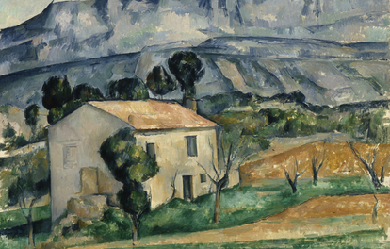
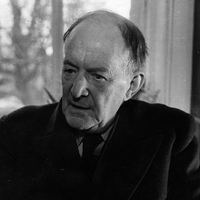
Walter John de la Mare (25 April 1873– 22 June 1956) was an English poet, short story writer and novelist. He is probably best remembered for his works for children, for his poem “The Listeners”, and for subtle psychological horror stories, amongst them “Seaton’s Aunt” and “Out of the Deep”. His 1921 novel Memoirs of a Midget won the James Tait Black Memorial Prize for fiction, and his post-war Collected Stories for Children won the 1947 Carnegie Medal for British children’s books.
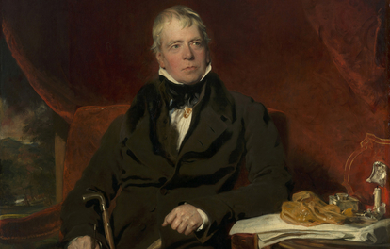
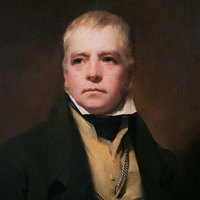
Sir Walter Scott, 1st Baronet, FRSE (15 August 1771– 21 September 1832) was a Scottish historical novelist, playwright and poet with many contemporary readers in Europe, Australia, and North America. Scott’s novels and poetry are still read, and many of his works remain classics of both English-language literature and of Scottish literature. Famous titles include Ivanhoe, Rob Roy, Old Mortality, The Lady of the Lake, Waverley, The Heart of Midlothian and The Bride of Lammermoor.
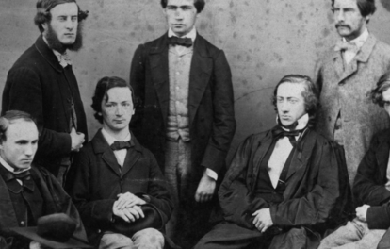
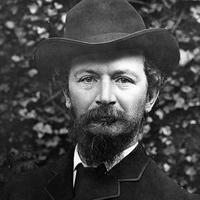
Algernon Charles Swinburne (5 April 1837– 10 April 1909) was an English poet, playwright, novelist, and critic. He wrote several novels and collections of poetry such as Poems and Ballads, and contributed to the famous Eleventh Edition of the Encyclopædia Britannica. A controversial figure at the time, Swinburne was a sado-masochist and alcoholic and was obsessed with the Middle Ages and lesbianism. Swinburne wrote about many taboo topics, such as lesbianism, cannibalism, sado-masochism, and anti-theism. His poems have many common motifs, such as the Ocean, Time, and Death. Several historical people are featured in his poems, such as Sappho ("Sapphics"), Anactoria ("Anactoria"), Jesus ("Hymn to Proserpine": Galilaee, La. “Galilean”) and Catullus ("To Catullus"). Biography Swinburne was born at 7 Chester Street, Grosvenor Place, London, on 5 April 1837. He was the eldest of six children born to Captain (later Admiral) Charles Henry Swinburne (1797–1877) and Lady Jane Henrietta, daughter of the 3rd Earl of Ashburnham. He grew up at East Dene in Bonchurch on the Isle of Wight. He attended Eton College (1849–53), where he first started writing poetry, and then Balliol College, Oxford (1856–60) with a brief hiatus when he was rusticated from the university in 1859 for having publicly supported the attempted assassination of Napoleon III by Felice Orsini. He returned in May 1860, though he never received a degree. He spent summer holidays at Capheaton Hall in Northumberland, the house of his grandfather, Sir John Swinburne, 6th Baronet (1762–1860), who had a famous library and was President of the Literary and Philosophical Society in Newcastle upon Tyne. Swinburne considered Northumberland to be his native county, an emotion reflected in poems like the intensely patriotic 'Northumberland’, 'Grace Darling’ and others. He enjoyed riding his pony across the moors (he was a daring horseman) 'through honeyed leagues of the northland border’, as he called the Scottish border in his Recollections. In the period 1857–60, Swinburne became one of Lady Pauline Trevelyan’s intellectual circle at Wallington Hall. After his grandfather’s death in 1860, he stayed with William Bell Scott in Newcastle. In 1861, Swinburne visited Menton on the French Riviera to recover from excessive use of alcohol, staying at the Villa Laurenti. From Menton, Swinburne travelled to Italy, where he journeyed extensively. In December 1862, Swinburne accompanied Scott and his guests, probably including Dante Gabriel Rossetti, on a trip to Tynemouth. Scott writes in his memoirs that, as they walked by the sea, Swinburne declaimed the as yet unpublished 'Hymn to Proserpine’ and 'Laus Veneris’ in his lilting intonation, while the waves 'were running the whole length of the long level sands towards Cullercoats and sounding like far-off acclamations’. At Oxford, Swinburne met several Pre-Raphaelites, including Dante Gabriel Rossetti. He also met William Morris. After leaving college, he lived in London and started an active writing career, where Rossetti was delighted with his 'little Northumbrian friend’, probably a reference to Swinburne’s diminutive height—he was just five foot four. Swinburne was an alcoholic and algolagniac and highly excitable. He liked to be flogged. His health suffered; and, in 1879 at the age of 42, he was taken into care by his friend, lawyer Theodore Watts, who looked after him for the rest of his life at The Pines, 11 Putney Hill, Putney SW15. Thereafter, he lost his youthful rebelliousness and developed into a figure of social respectability. It was said of Watts that he saved the man and killed the poet. Swinburne died at the Pines on 10 April 1909 at the age of 72 and was buried at St. Boniface Church, Bonchurch on the Isle of Wight. Reception Swinburne is considered a poet of the decadent school, although he perhaps professed to more vice than he actually indulged in to advertise his deviance– he spread a rumour that he had had sex with, then eaten, a monkey; Oscar Wilde stated that Swinburne was “a braggart in matters of vice, who had done everything he could to convince his fellow citizens of his homosexuality and bestiality without being in the slightest degree a homosexual or a bestialiser.” Many critics consider his mastery of vocabulary, rhyme and metre impressive, although he has also been criticised for his florid style and word choices that only fit the rhyme scheme rather than contributing to the meaning of the piece. He is the virtual star of the third volume of George Saintsbury’s famous History of English Prosody, and A. E. Housman, a more measured and even somewhat hostile critic, had great praise for his rhyming ability: [Swinburne] possessed an altogether unexampled command of rhyme, the chief enrichment of modern verse. The English language is comparatively poor in rhymes, and most English poets, when they have to rhyme more than two or three words together, betray their embarrassment. They betray it, for instance, when they write sonnets after the strict Petrarchian rule: the poetical inferiority of most English sonnets, if compared with what their own authors have achieved in other forms of verse, is largely though not entirely the result of this difficulty. [...] To Swinburne the sonnet was child’s play: the task of providing four rhymes was not hard enough, and he wrote long poems in which each stanza required eight or ten rhymes, and wrote them so that he never seemed to be saying anything for the rhyme’s sake. Swinburne’s work was once quite popular among undergraduates at Oxford and Cambridge, though today it has gone out of fashion. This is at least somewhat contextual, as it tends to mirror the popular and academic consensus regarding his work, although his Poems and Ballads, First Series and his Atalanta in Calydon have never been out of critical favour. Atalanta in Calydon in particular has been lauded as one of his best early works, written in 1865, before the passionate excesses of later works earned him a sordid reputation for blasphemy and depravity among contemporary critics. T. S. Eliot read Swinburne’s essays on the Shakespearean and Jonsonian dramatists in The Contemporaries of Shakespeare and The Age of Shakespeare and Swinburne’s books on Shakespeare and Jonson. Writing on Swinburne in 'The Sacred Wood: Essays on Poetry and Criticism’, Eliot said, of Swinburne, he had mastered his material, writing 'he is more reliable to them than Hazlitt, Coleridge, or Lamb: and his perception of relative values is almost always correct’. However, Eliot judged Swinburne did not master it to the extent of being able to take liberties with it, which is everything. Furthermore, Eliot disliked Swinburne’s prose, about which he wrote “the tumultuous outcry of adjectives, the headstrong rush of undisciplined sentences, are the index to the impatience and perhaps laziness of a disorderly mind.” Swinburne was nominated for the Nobel Prize in Literature every year from 1903 to 1907 and again in 1909. H. P. Lovecraft considered Swinburne “the only real poet in either England or America after the death of Mr. Edgar Allan Poe.” Work Swinburne’s poetic works include: Atalanta in Calydon (1865), Poems and Ballads (1866), Songs before Sunrise (1871), Poems and Ballads Second Series, (1878) Tristram of Lyonesse (1882), Poems and Ballads Third Series (1889), and the novel Lesbia Brandon (published posthumously in 1952). Poems and Ballads caused a sensation when it was first published, especially the poems written in homage of Sappho of Lesbos such as “Anactoria” and “Sapphics”: Moxon and Co. transferred its publication rights to John Camden Hotten. Other poems in this volume such as “The Leper,” “Laus Veneris,” and “St Dorothy” evoke a Victorian fascination with the Middle Ages, and are explicitly mediaeval in style, tone and construction. Also featured in this volume are “Hymn to Proserpine”, “The Triumph of Time” and “Dolores (Notre-Dame des Sept Douleurs)”. Swinburne devised the poetic form called the roundel, a variation of the French Rondeau form, and some were included in A Century of Roundels dedicated to Christina Rossetti. Swinburne wrote to Edward Burne-Jones in 1883: "I have got a tiny new book of songs or songlets, in one form and all manner of metres... just coming out, of which Miss Rossetti has accepted the dedication. I hope you and Georgie [his wife Georgiana, one of the MacDonald sisters] will find something to like among a hundred poems of nine lines each, twenty-four of which are about babies or small children". Opinions of these poems vary between those who find them captivating and brilliant, to those who find them merely clever and contrived. One of them, A Baby’s Death, was set to music by the English composer Sir Edward Elgar as the song Roundel: The little eyes that never knew Light. Swinburne was influenced by the work of William Shakespeare, Percy Bysshe Shelley, Catullus, William Morris, Dante Gabriel Rossetti, Robert Browning, Alfred Lord Tennyson, and Victor Hugo. While he was popular in England during his life, Swinburne’s influence has greatly decreased since his death. After the first Poems and Ballads, Swinburne’s later poetry was devoted more to philosophy and politics, including the unification of Italy, particularly in the volume Songs before Sunrise. He did not stop writing love poetry entirely, including his great epic-length poem, Tristram of Lyonesse, but its content is much less shocking. His versification, and especially his rhyming technique, remain in top form to the end. Verse drama The Queen Mother (1860) Rosamond (1860) Chastelard (1865) Bothwell (1874) Mary Stuart (1881) Marino Faliero (1885) Locrine (1887) The Sisters (1892) Rosamund, Queen of the Lombards (1899) Poetry Atalanta in Calydon (1865)† Poems and Ballads (1866) Songs Before Sunrise (1871) Songs of Two Nations (1875) Erechtheus (1876)† Poems and Ballads, Second Series (1878) Songs of the Springtides (1880) Studies in Song (1880) The Heptalogia, or the Seven against Sense. A Cap with Seven Bells (1880) Tristam of Lyonesse (1882) A Century of Roundels (1883) A Midsummer Holiday and Other Poems (1884) Poems and Ballads, Third Series (1889) Astrophel and Other Poems (1894) The Tale of Balen (1896) A Channel Passage and Other Poems (1904) ^† Although formally tragedies, Atlanta in Calydon and Erechtheus are traditionally included with “poetry”. Criticism William Blake: A Critical Essay (1868, new edition 1906) Under the Microscope (1872) George Chapman: A Critical Essay (1875) Essays and Studies (1875) A Note on Charlotte Brontë (1877) A Study of Shakespeare (1880) A Study of Victor Hugo (1886) A Study of Ben Johnson (1889) Studies in Prose and Poetry (1894) The Age of Shakespeare (1908) Shakespeare (1909) Major collections The poems of Algernon Charles Swinburne, 6 vols. London: Chatto & Windus, 1904. The Tragedies of Algernon Charles Swinburne, 5 vols. London: Chatto & Windus, 1905. The Complete Works of Algernon Charles Swinburne, ed. Sir Edmund Gosse and Thomas James Wise, 20 vols. Bonchurch Edition; London and New York: William Heinemann and Gabriel Wells, 1925-7. The Swinburne Letters, ed. Cecil Y. Lang, 6 vols. 1959-62. Ancestry References Wikipedia—https://en.wikipedia.org/wiki/Algernon_Charles_Swinburne

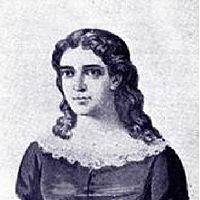
Dolores Veintimilla de Galindo (Quito, 12 de julio de 1829 - Cuenca, 23 de mayo de 1857) fue una poeta ecuatoriana del siglo XIX. Durante su corta vida fue la creadora de poemas de corte romántico que están cargados de elementos que asocian a la mujer con el papel de víctima asociados con sentimientos de dolor, tristeza, anhelo del pasado, amores frustrado y pesimismo. Fue influenciada por la formación de la subjetividad femenina de su época. Su poema “Quejas” está lleno de esos sentimientos que reflejan su estado anímico. El fracaso en su matrimonio con el médico colombiano Sixto Galindo, así como su pensamiento feminista adelantado a la época, marcarían la personalidad y los trabajos posteriores de Dolores. La persecución e incomprensión de la sociedad cuencana la llevó al suicidio.
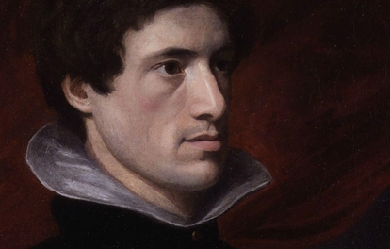
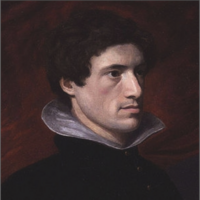
Charles Lamb (London, 10 February 1775 – Edmonton, 27 December 1834) was an English essayist, best known for his Essays of Elia and for the children's book Tales from Shakespeare, which he produced with his sister, Mary Lamb (1764–1847). Lamb has been referred to by E.V. Lucas, his principal biographer, as "the most lovable figure in English literature”. Youth and schooling Lamb was the son of Elizabeth Field and John Lamb. Lamb was the youngest child, with an 11 year older sister Mary, an even older brother John, and 4 other siblings who did not survive their infancy. John Lamb (father), who was a lawyer's clerk, spent most of his professional life as the assistant and servant to a barrister by the name of Samuel Salt who lived in the Inner Temple in London. It was there in the Inner Temple in Crown Office Row, that Charles Lamb was born and spent his youth. Lamb created a portrait of his father in his "Elia on the Old Benchers" under the name Lovel. Lamb's older brother was too much his senior to be a youthful companion to the boy but his sister Mary, being born eleven years before him, was probably his closest playmate. Lamb was also cared for by his paternal aunt Hetty, who seems to have had a particular fondness for him. A number of writings by both Charles and Mary suggest that the conflict between Aunt Hetty and her sister-in-law created a certain degree of tension in the Lamb household. However, Charles speaks fondly of her and her presence in the house seems to have brought a great deal of comfort to him. Some of Lamb's fondest childhood memories were of time spent with Mrs. Field, his maternal grandmother, who was for many years a servant to the Plummer family, who owned a large country house called Blakesware, near Widford, Hertfordshire. After the death of Mrs. Plummer, Lamb's grandmother was in sole charge of the large home and, as Mr. Plummer was often absent, Charles had free rein of the place during his visits. A picture of these visits can be glimpsed in the Elia essay Blakesmoor in H—shire. "Why, every plank and panel of that house for me had magic in it. The tapestried [sic] bed-rooms – tapestry so much better than painting – not adorning merely, but peopling the wainscots – at which childhood ever and anon would steal a look, shifting its coverlid (replaced as quickly) to exercise its tender courage in a momentary eye-encounter with those stern bright visages, staring reciprocally – all Ovid on the walls, in colours vivider than his descriptions.” Little is known about Charles's life before the age of seven. We know that Mary taught him to read at a very early age and he read voraciously. It is believed that he suffered from smallpox during his early years which forced him into a long period of convalescence. After this period of recovery Lamb began to take lessons from Mrs. Reynolds, a woman who lived in the Temple and is believed to have been the former wife of a lawyer. Mrs. Reynolds must have been a sympathetic schoolmistress because Lamb maintained a relationship with her throughout his life and she is known to have attended dinner parties held by Mary and Charles in the 1820s. E.V. Lucas suggests that sometime in 1781 Charles left Mrs. Reynolds and began to study at the Academy of William Bird. His time with William Bird did not last long, however, because by October 1782 Lamb was enrolled in Christ's Hospital, a charity boarding school chartered by King Edward VI in 1552. Christ's Hospital was a traditional English boarding school; bleak and full of violence. The headmaster, Mr. Boyer, has become famous for his teaching in Latin and Greek, but also for his brutality. A thorough record of Christ's Hospital in Several essays by Lamb as well as the Autobiography of Leigh Hunt and the Biographia Literaria of Samuel Taylor Coleridge, with whom Charles developed a friendship that would last for their entire lives. Despite the brutality Lamb got along well at Christ's Hospital, due in part, perhaps, to the fact that his home was not far distant thus enabling him, unlike many other boys, to return often to the safety of home. Years later, in his essay "Christ’s Hospital Five and Thirty Years Ago," Lamb described these events, speaking of himself in the third person as "L.” “I remember L. at school; and can well recollect that he had some peculiar advantages, which I and other of his schoolfellows had not. His friends lived in town, and were near at hand; and he had the privilege of going to see them, almost as often as he wished, through some invidious distinction, which was denied to us.” Christ's Hospital was a typical English boarding school and many students later wrote of the terrible violence they suffered there. The upper master of the school from 1778 to 1799 was Reverend James Boyer, a man renowned for his unpredictable and capricious temper. In one famous story Boyer was said to have knocked one of Leigh Hunt's teeth out by throwing a copy of Homer at him from across the room. Lamb seemed to have escaped much of this brutality, in part because of his amiable personality and in part because Samuel Salt, his father's employer and Lamb's sponsor at the school was one of the institute's Governors. Charles Lamb suffered from a stutter and this "an inconquerable impediment" in his speech deprived him of Grecian status at Christ's Hospital and thus disqualifying him for a clerical career. While Coleridge and other scholarly boys were able to go on to Cambridge, Lamb left school at fourteen and was forced to find a more prosaic career. For a short time he worked in the office of Joseph Paice, a London merchant and then, for 23 weeks, until 8 February 1792, held a small post in the Examiner's Office of the South Sea House. Its subsequent downfall in a pyramid scheme after Lamb left would be contrasted to the company's prosperity in the first Elia essay. On 5 April 1792 he went to work in the Accountant's Office for British East India Company, the death of his father's employer having ruined the family's fortunes.Charles would continue to work there for 25 years, until his retirement with pension. In 1792 while tending to his grandmother, Mary Field, in Hertfordshire, Charles Lamb fell in love with a young woman named Ann Simmons. Although no epistolary record exists of the relationship between the two, Lamb seems to have spent years wooing Miss Simmons. The record of the love exists in several accounts of Lamb's writing. Rosamund Gray is a story of a young man named Allen Clare who loves Rosamund Gray but their relationship comes to nothing because of the sudden death of Miss Gray. Miss Simmons also appears in several Elia essays under the name "Alice M." The essays "Dream Children," "New Year's Eve," and several others, speak of the many years that Lamb spent pursuing his love that ultimately failed. Miss Simmons eventually went on to marry a silversmith by the name of Bartram and Lamb called the failure of the affair his 'great disappointment. Family tragedy Charles and his sister Mary both suffered periods of mental illness. Charles spent six weeks in a psychiatric hospital during 1795. He was, however, already making his name as a poet. On 22 September 1796, a terrible event occurred: Mary, "worn down to a state of extreme nervous misery by attention to needlework by day and to her mother at night," was seized with acute mania and stabbed her mother to the heart with a table knife. Although there was no legal status of 'insanity' at the time, a jury returned a verdict of 'Lunacy' and therefore freed her from guilt of willful murder. With the help of friends Lamb succeeded in obtaining his sister's release from what would otherwise have been lifelong imprisonment, on the condition that he take personal responsibility for her safekeeping. Lamb used a large part of his relatively meagre income to keep his beloved sister in a private 'madhouse' in Islington called Fisher House. The 1799 death of John Lamb was something of a relief to Charles because his father had been mentally incapacitated for a number of years since suffering a stroke. The death of his father also meant that Mary could come to live again with him in Pentonville, and in 1800 they set up a shared home at Mitre Court Buildings in the Temple, where they lived until 1809. Despite Lamb's bouts of melancholia and alcoholism, both he and his sister enjoyed an active and rich social life. Their London quarters became a kind of weekly salon for many of the most outstanding theatrical and literary figures of the day. Charles Lamb, having been to school with Samuel Coleridge, counted Coleridge as perhaps his closest, and certainly his oldest, friend. On his deathbed, Coleridge had a mourning ring sent to Lamb and his sister. Fortuitously, Lamb's first publication was in 1796, when four sonnets by "Mr. Charles Lamb of the India House" appeared in Coleridge's Poems on Various Subjects. In 1797 he contributed additional blank verse to the second edition, and met the Wordsworths, William and Dorothy, on his short summer holiday with Coleridge at Nether Stowey, thereby also striking up a lifelong friendship with William. In London, Lamb became familiar with a group of young writers who favoured political reform, including Percy Bysshe Shelley, William Hazlitt, and Leigh Hunt. Lamb continued to clerk for the East India Company and doubled as a writer in various genres, his tragedy, John Woodvil, being published in 1802. His farce, Mr H, was performed at Drury Lane in 1807, where it was roundly booed. In the same year, Tales from Shakespeare (Charles handled the tragedies; his sister Mary, the comedies) was published, and became a best seller for William Godwin's "Children's Library." In 1819, at age 44, Lamb, who, because of family commitments, had never married, fell in love with an actress, Fanny Kelly, of Covent Garden, and proposed marriage. She refused him, and he died a bachelor. His collected essays, under the title Essays of Elia, were published in 1823 ("Elia" being the pen name Lamb used as a contributor to the London Magazine). A further collection was published ten years or so later, shortly before Lamb's death. He died of a streptococcal infection, erysipelas, contracted from a minor graze on his face sustained after slipping in the street, on 27 December 1834, just a few months after Coleridge. He was 59. From 1833 till their deaths Charles and Mary lived at Bay Cottage, Church Street, Edmonton north of London (now part of the London Borough of Enfield. Lamb is buried in All Saints' Churchyard, Edmonton. His sister, who was ten years his senior, survived him for more than a dozen years. She is buried beside him. Work Lamb's first publication was the inclusion of four sonnets in the Coleridge's Poems on Various Subjects published in 1796 by Joseph Cottle. The sonnets were significantly influenced by the poems of Burns and the sonnets of William Bowles, a largely forgotten poet of the late 18th century. His poems garnered little attention and are seldom read today. Lamb's contributions to the second edition of the Poems showed significant growth as a poet. These poems included The Tomb of Douglas and A Vision of Repentance. Because of a temporary fall-out with Coleridge, Lamb's poems were to be excluded in the third edition of the Poems. As it turned out, a third edition never emerged and instead Coleridge's next publication was the monumentally influential Lyrical Ballads co-published with Wordsworth. Lamb, on the other hand, published a book entitled Blank Verse with Charles Lloyd, the mentally unstable son of the founder of Lloyd's Bank. Lamb's most famous poem was written at this time entitled The Old Familiar Faces. Like most of Lamb's poems it is particularly sentimental but it is still remembered and widely read, often included in Poetic Collections. Of particular interest to Lambarians is the opening verse of the original version of The Old Familiar Faces which is concerned with Lamb's mother. It was a verse that Lamb chose to remove from the edition of his Collected Work published in 1818. I had a mother, but she died, and left me, Died prematurely in a day of horrors - All, all are gone, the old familiar faces. From a fairly young age Lamb desired to be a poet but never gained the success that he had hoped. Lamb lived under the poetic shadow of his friend Coleridge. In the final years of the 18th century Lamb began to work on prose with the novella entitled Rosamund Gray, a story of a young girl who was thought to be inspired by Ann Simmonds, with whom Charles Lamb was thought to be in love. Although the story is not particularly successful as a narrative because of Lamb's poor sense of plot, it was well thought of by Lamb's contemporaries and led Shelley to observe “what a lovely thing is Rosamund Gray! How much knowledge of the sweetest part of our nature in it!" (Quoted in Barnett, page 50) n the first years of the 19th century Lamb began his fruitful literary cooperation with his sister Mary. Together they wrote at least three books for William Godwin’s Juvenile Library. The most successful of these was of course Tales From Shakespeare which ran through two editions for Godwin and has now been published dozens of times in countless editions, many of them illustrated. Lamb also contributed a footnote to Shakespearean studies at this time with his essay "On the Tragedies of Shakespeare," in which he argues that Shakespeare should be read rather than performed in order to gain the proper effect of his dramatic genius. Beside contributing to Shakespeare studies with his book Tales From Shakespeare, Lamb also contributed to the popularization of Shakespeare's contemporaries with his book Specimens of the English Dramatic Poets Who Lived About the Time of Shakespeare. Although he did not write his first Elia essay until 1820, Lamb’s gradual perfection of the essay form for which he eventually became famous began as early 1802 in a series of open letters to Leigh Hunt’s Reflector. The most famous of these is called "The Londoner" in which Lamb famously derides the contemporary fascination with nature and the countryside. Legacy Anne Fadiman notes regretfully that Lamb is not widely read in modern times: "I do not understand why so few other readers are clamoring for his company... [he] is kept alive largely through the tenuous resuscitations of university English departments." Lamb was honoured by The Latymer School, a grammar school in Edmonton, a suburb of London where he lived for a time; it has six houses, one of which, "Lamb", is named after Charles. Selected works * Blank Verse, poetry, 1798 * A Tale of Rosamund Gray, and old blind Margaret, 1798 * John Woodvil, poetic drama, 1802 * Tales from Shakespeare, 1807 * The Adventures of Ulysses, 1808 * Specimens of English Dramatic poets who lived about the time of Shakespeare, 1808 * On the Tragedies of Shakespeare, 1811 * Witches and Other Night Fears, 1821 * The Pawnbroker's Daughter, 1825 * Eliana, 1867 * Essays of Elia, 1823 * The Last Essays of Elia, 1833 References Wikipedia – http://en.wikipedia.org/wiki/Charles_Lamb
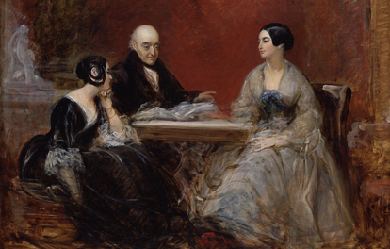
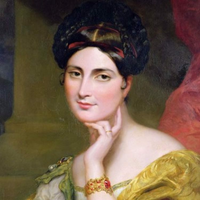
Caroline Elizabeth Sarah Norton (22 March 1808 – 15 June 1877) was an English social reformer, and author of the early and mid-nineteenth century. Caroline left her husband in 1836, following which her husband sued her close friend Lord Melbourne, the then Whig Prime Minister, for criminal conversation. The jury threw out the claim, but Caroline was unable to obtain a divorce and was denied access to her three sons. Caroline's intense campaigning led to the passing of the Custody of Infants Act 1839, the Matrimonial Causes Act 1857 and the Married Women's Property Act 1870. Caroline modelled for the fresco of Justice in the House of Lords by Daniel Maclise, who chose her because she was seen by many as a famous victim of injustice.
Donald Hall (September 20, 1928 – June 23, 2018) was an American poet born in New Haven, Connecticut, in 1928. He began writing as an adolescent and attended the Bread Loaf Writers' Conference at the age of sixteen—the same year he had his first work published. He earned a B.A. from Harvard in 1951 and a B. Litt. from Oxford in 1953.
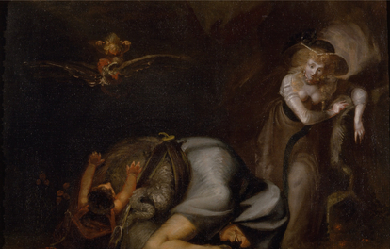
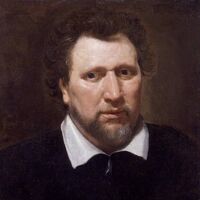
Ben Jonson (originally Benjamin Jonson; c. 11 June 1572 – 6 August 1637) was an English playwright, poet, and literary critic of the seventeenth century, whose artistry exerted a lasting impact upon English poetry and stage comedy. He popularised the comedy of humours. He is best known for the satirical plays Every Man in His Humour (1598), Volpone, or The Foxe (1605), The Alchemist (1610), and Bartholomew Fayre: A Comedy (1614), and for his lyric poetry; he is generally regarded as the second most important English dramatist, after William Shakespeare, during the reign of James I. He was a classically educated, well-read, and cultured man of the English Renaissance with an appetite for controversy (personal and political, artistic and intellectual) whose cultural influence was of unparalleled breadth upon the playwrights and the poets of the Jacobean era (1603–1625) and of the Caroline era (1625–1642).
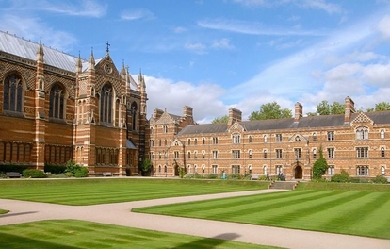
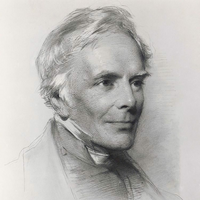
John Keble (25 April 1792– 29 March 1866) was an English churchman and poet, one of the leaders of the Oxford Movement. Keble College, Oxford was named after him. Life and writings Early life Keble was born in Fairford, Gloucestershire where his father, the Rev. John Keble, was Vicar of Coln St. Aldwyns. He attended Corpus Christi College, Oxford, and, after a brilliant academic performance there, became a Fellow of Oriel College, Oxford, and was for some years a tutor and examiner in the University. While still at Oxford he took Holy Orders in 1815, and became first a curate to his father, and later curate of St Michael and St Martin’s Church, Eastleach Martin in Gloucestershire. The Christian Year Meantime, he had been writing 'The Christian Year’, which appeared in 1827, and met with an almost unparalleled acceptance. Though at first anonymous, its authorship soon became known, with the result that Keble was in 1831 appointed to the Chair of Poetry at Oxford, which he held until 1841. Victorian scholar Michael Wheeler calls The Christian Year simply “the most popular volume of verse in the nineteenth century”. In his essay on Tractarian Aesthetics and the Romantic Tradition, Gregory Goodwin claims that The Christian Year is “Keble’s greatest contribution to the Oxford Movement and to English literature.” As evidence of that Goodwin cites E. B. Pusey’s report that ninety-five editions of this devotional text were printed during Keble’s lifetime, and “at the end of the year following his death, the number had arisen to a hundred-and-nine”. By the time the copyright expired in 1873, over 375,000 copies had been sold in Britain and 158 editions had been published. Notwithstanding its widespread appeal among the Victorian readers, the popularity of Keble’s The Christian Year faded in the twentieth century despite the familiarity of certain well-known hymns, e.g. “New every morning is the love.” Tractarianism and Vicar of Hursley In 1833 his famous Assize Sermon on “National Apostasy” gave the first impulse to the Oxford Movement, also known as the Tractarian movement. Along with his colleagues, including John Henry Newman and Edward Pusey, he became a leading light in the movement, but did not follow Newman into the Roman Catholic Church. In 1835 he was appointed Vicar of Hursley, Hampshire, where he settled down to family life and remained for the rest of his life as a parish priest at All Saints Church. He was a profound influence on a near neighbour, the author Charlotte Mary Yonge. Other writings In 1846 he published another book of poems, Lyra Innocentium. Other works were a Life of Wilson, Bishop of Sodor and Man, and an edition of the Works of Hooker. After his death appeared Letters of Spiritual Counsel, and 12 volumes of Parish Sermons. He also wrote hymns, such as “The Voice that Breathed o’er Eden” and Sun of our soul, Thou Saviour dear Biographies Two lives of Keble have been written, one by John Taylor Coleridge (1869), and the other by Rev. Walter Lock (1895). In 1963 Georgina Battiscombe wrote a biography titled John Keble: a Study in Limitations. Death Keble died in Bournemouth at the Hermitage Hotel, after visiting the area to try and recover from a long term illness as he believed the sea air had therapeutic qualities. He is buried in All Saints’ churchyard, Hursley. Legacy Keble’s feast day is kept on 14 July (the anniversary of his Assize Sermon) in the Church of England, and a commemoration observed on 29 March (the anniversary of his death) elsewhere in the Anglican Communion. Keble College, Oxford was founded in his memory. The view from Bulverton Hill, Sidmouth, is thought to have inspired 19th century poet and hymn writer John Keble to compose some of his best loved work, Keble’s Seat at Bulverton Hill is named after the English churchman and commands a panoramic view of the Lower Otter Valley and Dartmoor in the distance. He was a frequent visitor to Sidmouth and folklore suggests that Keble’s favourite spot was at Bulverton Hill where a wooden bench known as Keble’s Seat remains to this day. References Wikipedia—https://en.wikipedia.org/wiki/John_Keble
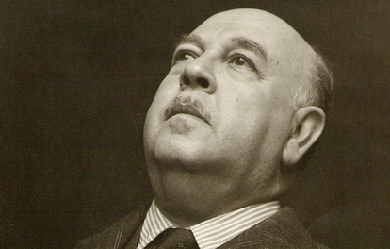
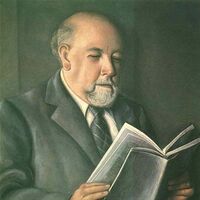
Alfonso Reyes Ochoa (Monterrey, 17 de mayo de 1889 - México, D.F., 27 de diciembre de 1959) fue un poeta, ensayista, narrador, diplomático y pensador mexicano. Se le conoce también como «el regiomontano universal». Fue el noveno de los doce hijos del general Bernardo Reyes y de doña Aurelia Ochoa. Su padre ocupó importantes cargos durante los gobiernos de Porfirio Díaz (fue gobernador del estado de Nuevo León y Secretario de Guerra y Marina). Alfonso Reyes es un escritor clásico, formalista, comedido, su prosa nos hace pensar en el modelo apolíneo de Nietzsche. Sus temas y preocupaciones fueron siempre los grandes temas de la cultura clásica griega. Fue considerado por Borges “el mejor prosista del idioma español del siglo XX”.



